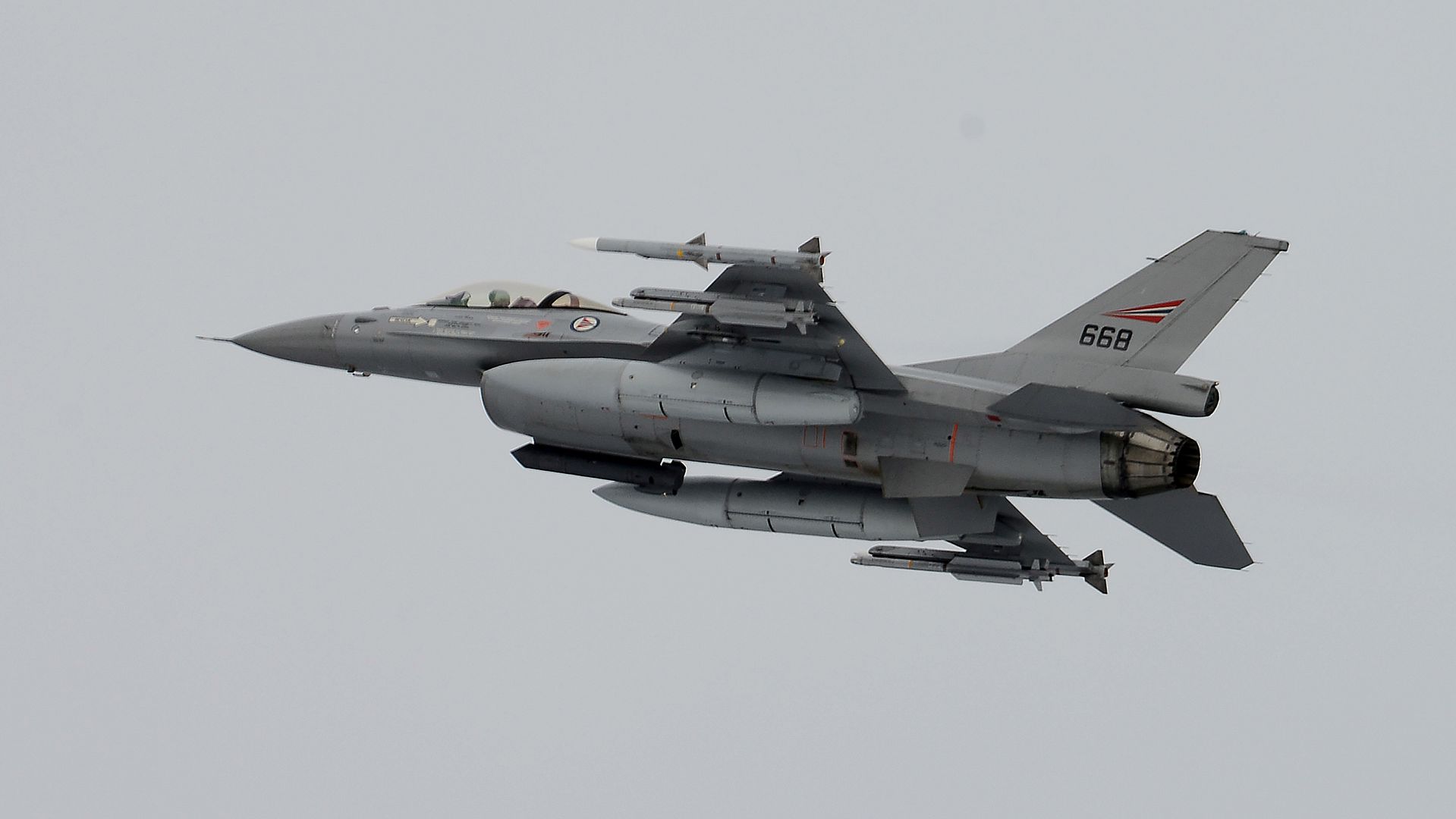Forums
- Forums
- Axis And Allies Forum
- General Discussion
- Aviation News
Aviation News
Post a reply
- Go to Previous topic
- Go to Next topic
- Go to Welcome
- Go to Introduce Yourself
- Go to General Discussion
- Go to Screenshots, Images and Videos
- Go to Off topic
- Go to Works in Progress
- Go to Skinning Tips / Tutorials
- Go to Skin Requests
- Go to IJAAF Library
- Go to Luftwaffe Library
- Go to RAF Library
- Go to USAAF / USN Library
- Go to Misc Library
- Go to The Ops Room
- Go to Made in Germany
- Go to Campaigns and Missions
- Go to Works in Progress
- Go to Juri's Air-Raid Shelter
- Go to Campaigns and Missions
- Go to Works in Progress
- Go to Skinpacks
- Go to External Projects Discussion
- Go to Books & Resources
-
 Main AdminA member of the 100th Logistics Readiness Squadron refuels a 74th Expeditionary Fighter Squadron A-10C Thunderbolt II aircraft during forward area refueling point training at Plovdiv, Bulgaria, Feb. 11, 2016. A single A-10 usually receives approximately 2000 pounds of fuel in a 4-5 minute span during FARP training but the C-130 can provide tens of thousands of pounds of fuel if needed. (U.S. Air Force photo by Airman 1st Class Luke Kitterman/Released)
Main AdminA member of the 100th Logistics Readiness Squadron refuels a 74th Expeditionary Fighter Squadron A-10C Thunderbolt II aircraft during forward area refueling point training at Plovdiv, Bulgaria, Feb. 11, 2016. A single A-10 usually receives approximately 2000 pounds of fuel in a 4-5 minute span during FARP training but the C-130 can provide tens of thousands of pounds of fuel if needed. (U.S. Air Force photo by Airman 1st Class Luke Kitterman/Released)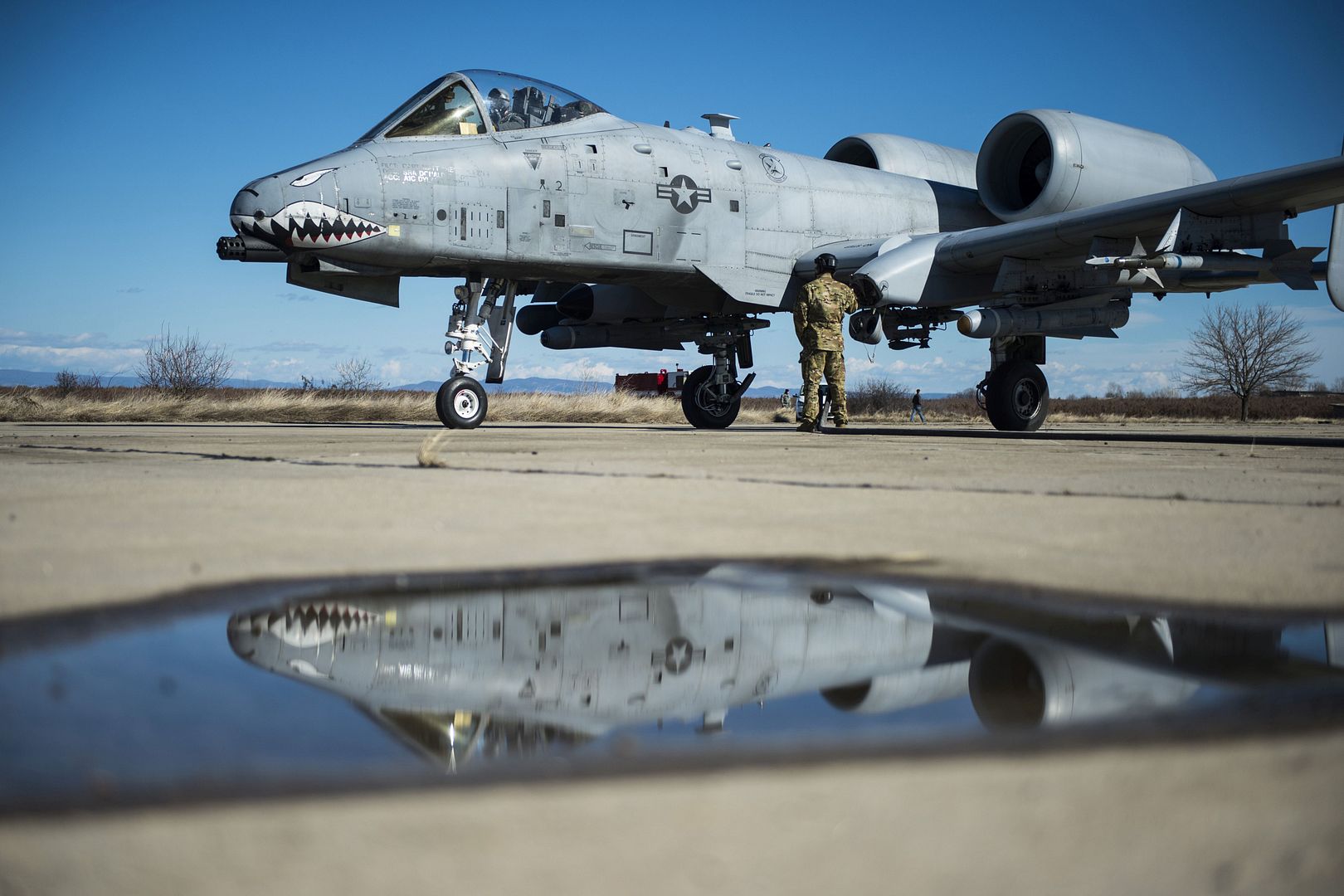
PHILIPPINE SEA (Feb. 23, 2016) - Aviation Boatswain's Mate (Handling) 2nd Class Emmanuel Bonsu, from Accra, Ghana, directs an F/A-18E Super Hornet assigned to the Tophatters of Strike Fighter Squadron (VFA) 14 on USS John C. Stennis' (CVN 74) flight deck. Providing a ready force supporting security and stability in the Indo-Asia-Pacific, Stennis is operating as part of the Great Green Fleet on a regularly scheduled 7th Fleet deployment. (U.S. Navy photo by Mass Communication Specialist 3rd Class Kenneth Rodriguez Santiago / Released)
A U.S. Marine Corps CH-53 Super Stallion Helicopter sits connected to warming vents as it prepares for flight later in the day in Vaernes, Norway, Feb. 22, 2016. All aircraft with Marine Heavy Helicopter Squadron (-) Reinforced, the Air Combat Element of 2d MEB, were dismantled at Marine Corps Air Station Cherry Point, N.C., and flown to Norway in U.S. Air Force C-5 Galaxies to provide air support during the exercise. Cold Response 16 is a combined, joint exercise comprised of 12 NATO allies and partnered nations and approximately 16,000 troops. (U.S. Marine Corps photo by Cpl. Dalton A. Precht/released)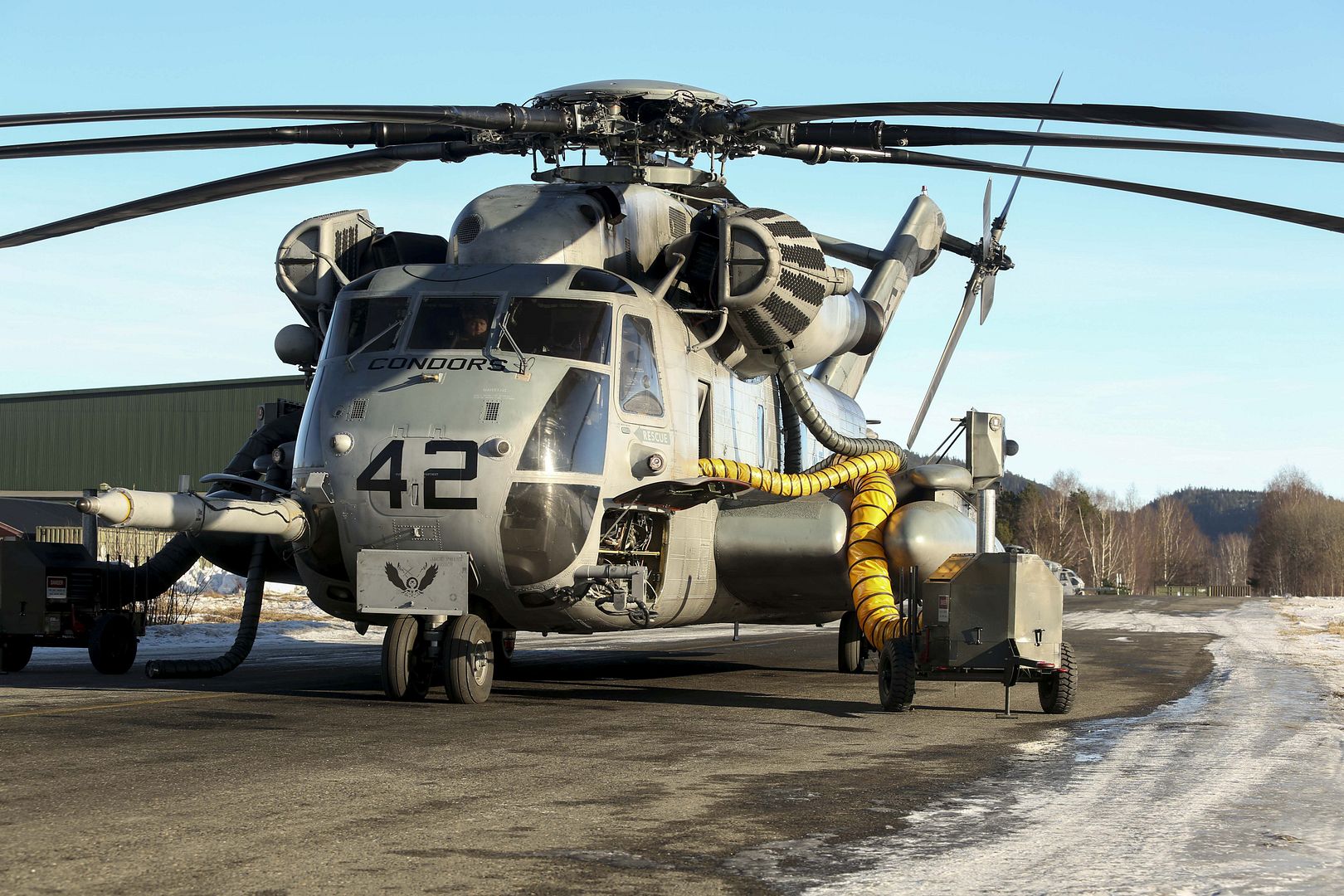
News Article / February 22, 2016
By Sub-Lieutenant Patrick McCarthy
Just off the coast of Nova Scotia recently, the sun shone on a milestone achievement for the Royal Canadian Air Force?s CH-148 Cyclone helicopter project.
The first Cyclone helicopter, fully manned by Royal Canadian Air Force (RCAF) personnel, successfully landed on a Canadian warship at sea on January 27, 2016. Her Majesty?s Canadian Ship Halifax, the ship on which the first Cyclone landing occurred, has been involved with CH-148 testing and training for the past year.
HMCS Halifax began ?ship helo operating limits? (SHOL) trials in January 2015 and spent five months working with the Cyclone helicopter conducting tests and trials in order to determine operating limits and best practices for the new helicopter. Recommencing SHOL trials in January 2016, the crew of Halifax were happy to a part of this milestone flight for the RCAF.
?This milestone achievement represents a great step forward towards full integration of the Cyclone helicopter into [Royal Canadian Navy] operations,? said Commander Graham Roberts, the commanding officer of HMCS Halifax. ?Halifax has been extremely impressed with the capabilities of the Cyclone over the past year and we look forward to continuing to work with helicopter at sea in the coming months.?
Aircrew and ship?s crew shared similar sentiments. Captain Thomas Munro of 423 Maritime Helicopter Squadron, located at 12 Wing Shearwater, Nova Scotia, was the landing signals officer for the first landing. He said he was excited to be a part of the ongoing integration of the Cyclone helicopter and noted: ?This week was an excellent opportunity for pilot force generation and an important milestone in the maritime helicopter project.?
Personnel at the Helicopter Operational Test and Evaluation Facility (HOTEF) at 12 Wing have been working very hard to ensure milestones such as this one are achieved.
?The CH-148 Cyclone landing on HMCS Halifax is a tangible representation of the hard work and foundational effort the Helicopter Operational Test and Evaluation has invested since acceptance of the aircraft. The HOTEF continues to lead the introduction of the CH-148 weapon system by proving the operational capabilities of the aircraft and its in-service support structure,? said Major Travis Chapman, the HOTEF?s commanding officer.
HMCS Halifax will continue to operate with the Cyclone helicopter fleet for the remainder of the winter, conducting SHOL trials and furthering the ongoing integration of the Cyclone helicopter into naval operations.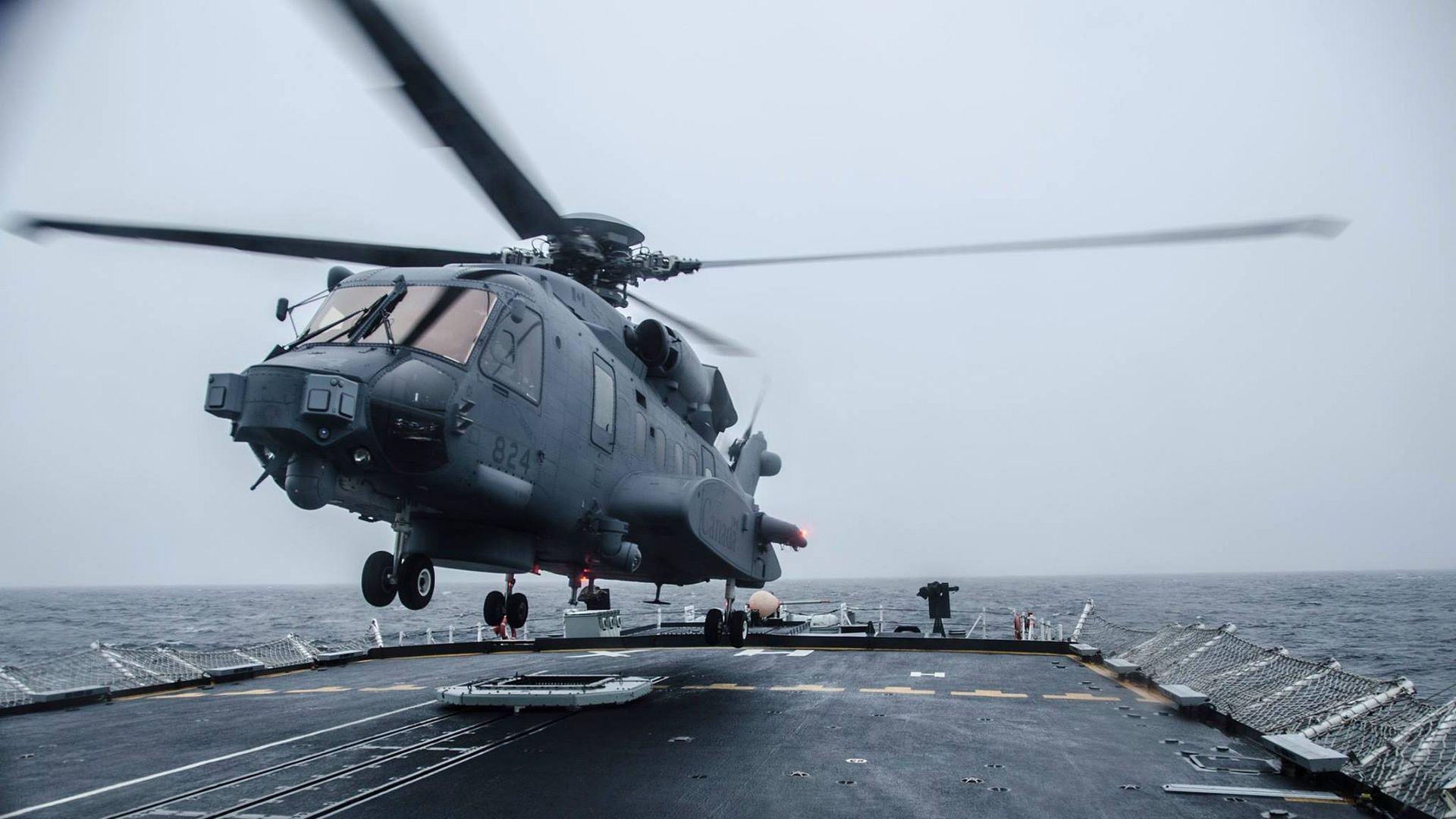
-
 Main AdminRAMSTEIN AIR BASE, Germany (AFNS) -- Three KC-135 Stratotankers, along with 50 Airmen from the 100th Air Refueling Wing at Royal Air Force Mildenhall, England, temporarily deployed to Istres-Le Tub? Air Base, France, in support of Operation Juniper Micron.
Main AdminRAMSTEIN AIR BASE, Germany (AFNS) -- Three KC-135 Stratotankers, along with 50 Airmen from the 100th Air Refueling Wing at Royal Air Force Mildenhall, England, temporarily deployed to Istres-Le Tub? Air Base, France, in support of Operation Juniper Micron.
The U.S. has been supporting the French government in Operation Juniper Micron at their request since 2013, providing air refueling and airlift support of French operations in Mali and North Africa.
Since December 2015 alone, the 100th ARW has flown more than 750 sorties, refueled more than 2,900 French aircraft, and off-loaded nearly 28 million pounds of fuel while supporting French operations.
The strategic decision to temporarily deploy the KC-135s to Istres is the result of the continual evaluation of how to best support French ally forces in the air and on the ground.
The long-standing relationship between the U.S. and France enables operational success by allowing a forward-based presence of U.S. Air Forces in Europe ? Air Forces Africa assets and the ability to move forward quickly in support of French operations.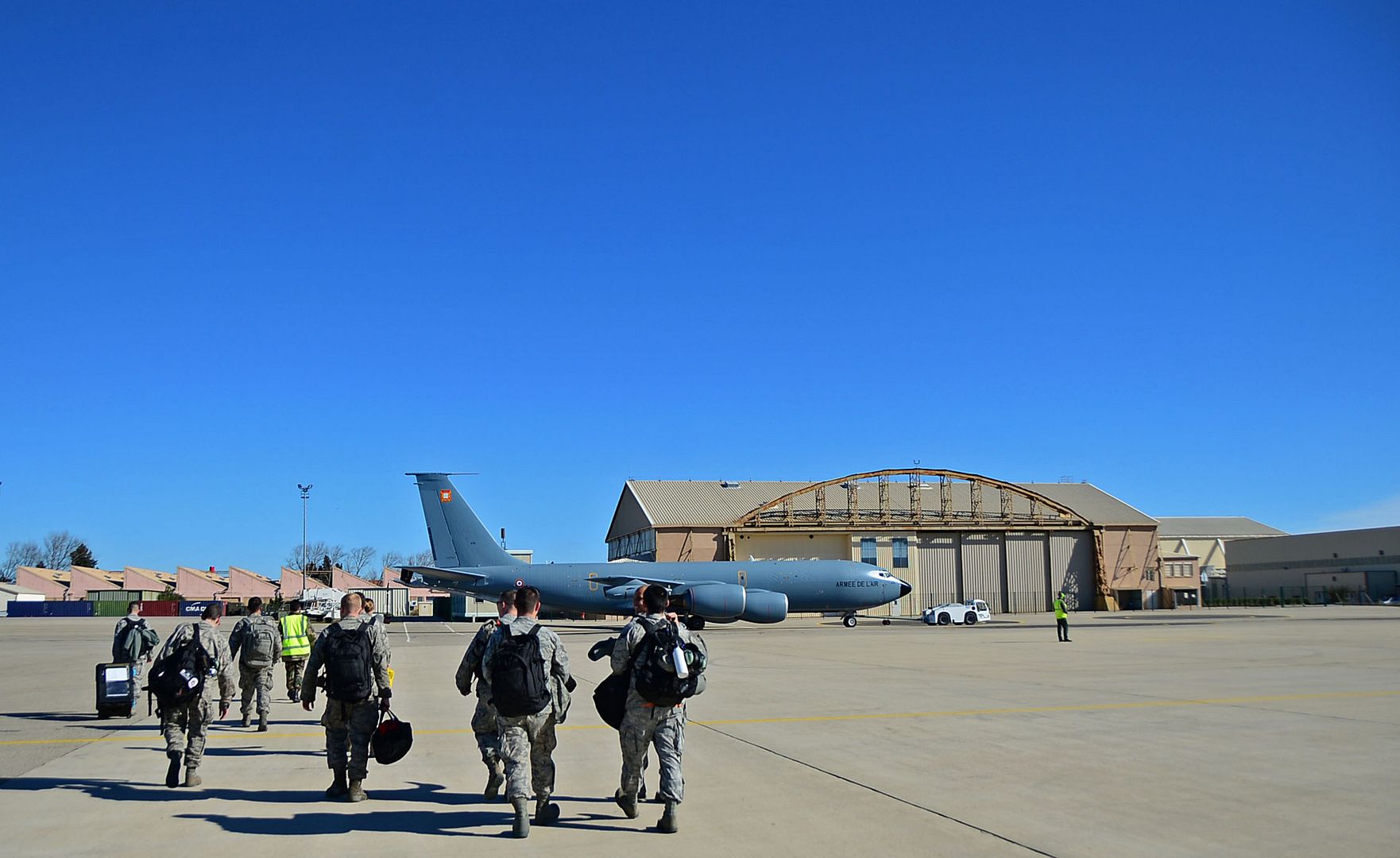
Members of the 455th Expeditionary Aircraft Maintenance Squadron and 774th Expeditionary Airlift Squadron relay information via headset during engine run-ups on a C-130J Super Hercules before a sortie at Bagram Air Field, Afghanistan, Feb. 22, 2016. The 455th EAMXS ensures that aircraft at Bagram are prepared for flight and return them to a mission-ready state once they land. (U.S. Air Force photo/Tech. Sgt. Robert Cloys)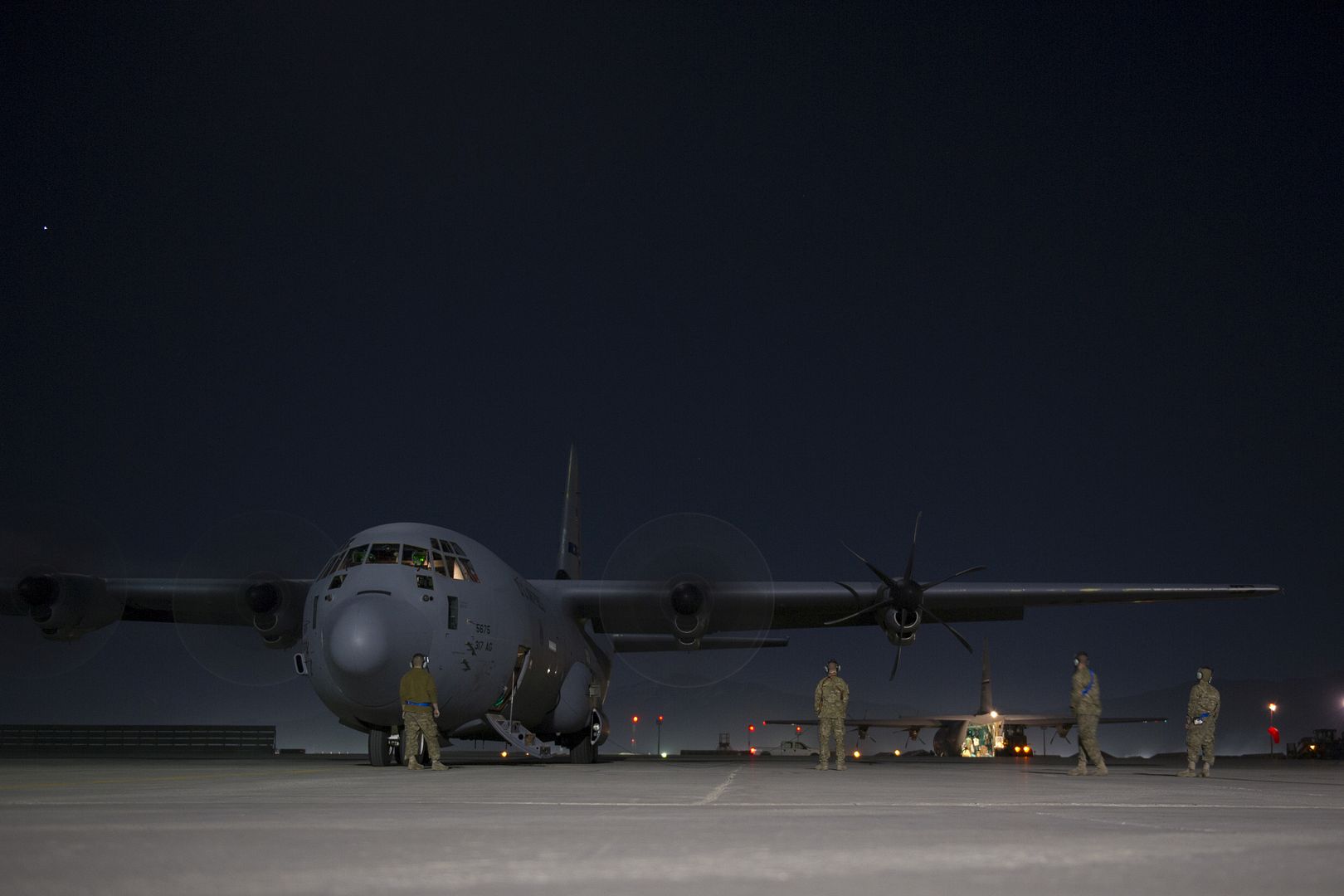
SHANGHAI, Feb. 24, 2016 /PRNewswire/ -- Boeing [NYSE: BA] today launched the Next-Generation 737-800 Boeing Converted Freighter (BCF) with orders and commitments for up to 55 conversions from seven customers.
"The Next-Generation 737 provides exceptional value to express freight carriers through its superior payload, range, reliability and efficiency," said Stan Deal, senior vice president, Commercial Aviation Services, Boeing Commercial Airplanes.
"While the recovery of the global cargo market has been slow, we see demand for freighters, such as the 737-800BCF, that will carry express cargo on domestic routes," Deal said. "Over the next 20 years, Boeing forecasts customers will need more than 1,000 converted freighters the size of the 737, with China's domestic air freight carriers accounting for nearly one-third of the total market."
Through its freighter conversion program, Boeing transitions passenger airplanes into freighters, extending the economic life of the airplane. The 737-800 is the first Next-Generation 737 that Boeing has offered for conversion. While large freighters carry high-density cargo on long-range routes, the 737-800BCF will primarily be used to carry express cargo on domestic routes.
The 737-800BCF carries up to 52,800 pounds (23.9 metric tons) of cargo, flying routes of nearly 2,000 nautical miles (3,690 kilometers).
Twelve pallet positions ? 11 standard pallets and one half-pallet ? provide 5,000 cubic feet (141.5 cubic meters) of cargo space on the main deck. This will be supplemented by two lower-lobe compartments, combined providing more than 1,540 cubic feet (43.7 cubic meters) of space for revenue-generating cargo.
Boeing has won a total of 30 firm orders and 25 commitments for the 737-800BCF:
YTO Airlines, based in Hangzhou, China, has ordered 10 conversions with commitments for 10 additional conversions
China Postal Airlines, based in Beijing, has ordered 10 conversions
GE Capital Aviation (GECAS), which will provide the initial airplane for conversion, has ordered five conversions
An unannounced customer has ordered five conversions with two commitments
In addition, Boeing has secured 13 commitments for conversions from:
SF Airlines, based in Shenzhen, China
Cargo Air, based in Sofia, Bulgaria
An unannounced customer
The first 737-800BCF is expected to be delivered in the fourth quarter of 2017.
Existing passenger airplanes will be modified at select facilities located near conversion demand, including Boeing Shanghai. Modifications include installing a large main-deck cargo door, a cargo-handling system and accommodations for up to four non-flying crew members or passengers.
EVERETT, Wash., Feb. 24, 2016 /PRNewswire/ -- Boeing [NYSE: BA], MG Aviation Ltd and Norwegian today celebrated the delivery of the Scandinavian low-cost carrier's first Boeing 787-9 Dreamliner.
Norwegian leased the airplane through an agreement with MG Aviation. The delivery is also the first Dreamliner to MG Aviation, the aviation leasing arm of Jordache Enterprises which has three additional 787s on order.
"The 787-9 Dreamliner will provide Norwegian with unrivalled operational advantages, large improvements in fuel efficiency and much lower costs," said Norwegian's CEO Bj?rn Kjos. "In addition, it is an airplane that offers an exceptional in-flight experience."
Norwegian already operates eight 787-8s and will use its 787-9s to open up new routes across North America, South America and Southeast Asia with its increased range and capacity.
"The Dreamliner is an excellent addition to our leasing portfolio that sets customers like Norwegian apart from the competition," said Nir Dagan, speaking for MG Aviation. "We are proud to place our 787-9s with Norwegian. We believe this airplane is a perfect fit and will deliver the airline with significant operational benefits and customer value."
The 787-9 complements and extends the super-efficient 787 family. With the fuselage stretched by 20 feet (6 meters) over the 787-8, the 787-9 will fly more passengers and more cargo farther with the same exceptional environmental performance ? 20 percent less fuel use and 20 percent fewer emissions than similarly sized airplanes.
"We are honored to deliver the first 787-9 to our partners at Norwegian and MG Aviation - two companies that clearly understand the value proposition of the 787," said Monty Oliver, vice president, European Sales, Boeing Commercial Airplanes. "This airplane is a great addition to any carrier's fleet, offering superior passenger comfort, increased cargo capacity and lower operating costs."
Norwegian serves more than 130 destinations across Europe, North Africa, the Middle East, the USA and Southeast Asia, with a fleet that includes 90 Next-Generation 737-800s and eight 787-8s. In October 2015 the airline placed the largest single order for 787-9s from a European carrier, ordering 19 airplanes valued at more than $5 billion at list prices.
MG Aviation is part of Jordache Enterprises, the Nakash family's global conglomerate that also operates Arkia Israeli Airlines.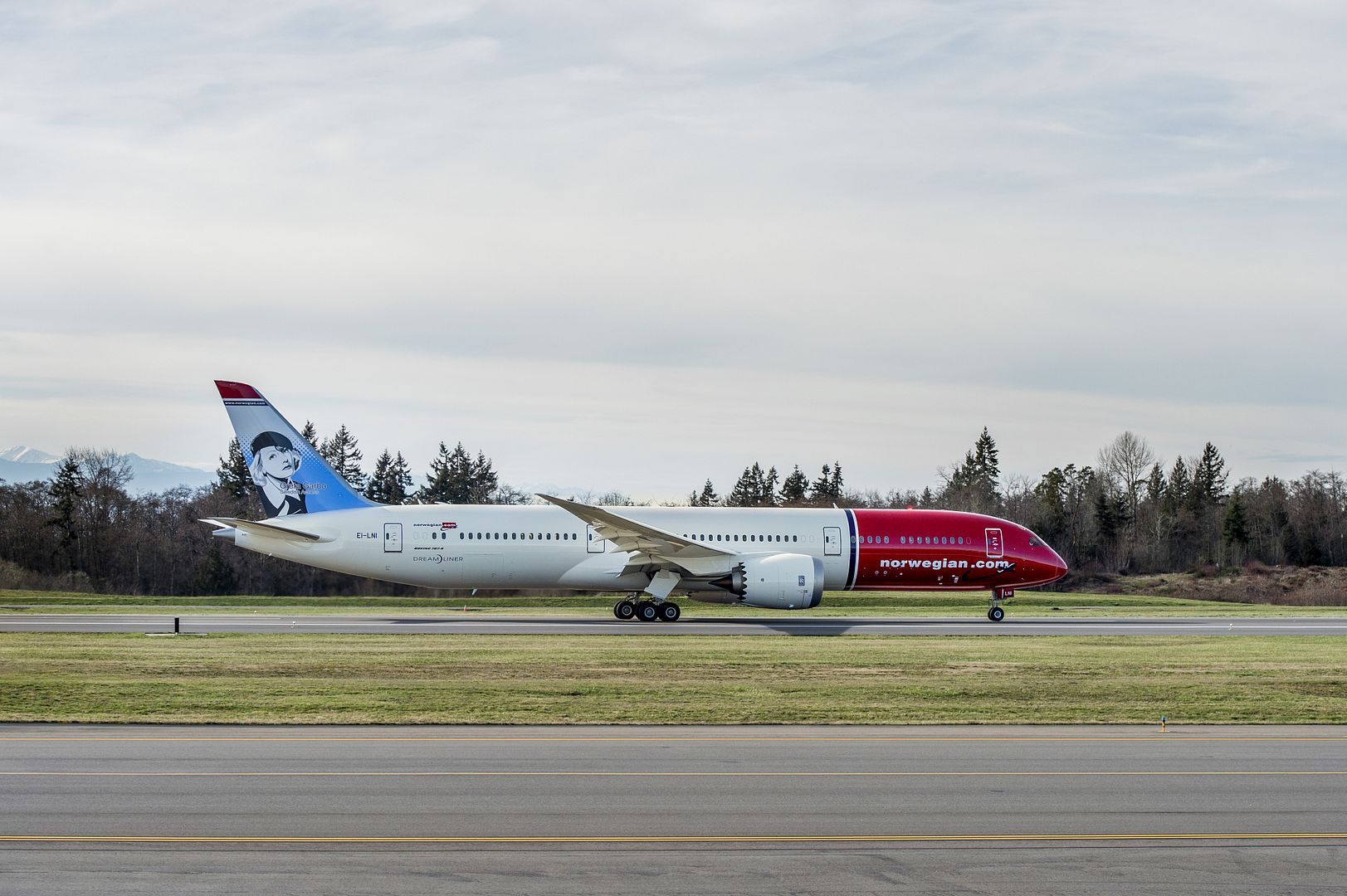
-
 Main AdminKADENA AIR BASE, Japan (AFNS) -- Instead of the usual howl of jet engines, members of Kadena Air Base heard the growl of 120 turboprop blades chopping the air as the 17th Special Operations Squadron?s MC-130J Commando IIs dominated the airfield scene Feb. 17.
Main AdminKADENA AIR BASE, Japan (AFNS) -- Instead of the usual howl of jet engines, members of Kadena Air Base heard the growl of 120 turboprop blades chopping the air as the 17th Special Operations Squadron?s MC-130J Commando IIs dominated the airfield scene Feb. 17.
Within an hour of standing by at stations, the aircraft took to the skies during the Pacific region's first five-ship formation flight involving the new specialized mobility aircraft.
The formation was part of the 353rd Special Operations Group's training exercise that tested the 17th SOS and the 353rd Special Operations Maintenance Squadron to launch a short-notice, large-scale tasking.
"We routinely fly two ships, but we mobilized five ships to test our ability to generate aircraft in full force, to make sure our maintenance can support that, and to make sure we can do the planning in case we are ever asked to fly a large formation," said Maj. Brad Talley, the 17th SOS assistant director of operations.
As part of that assessment, team members evaluated their formation flying and short runway landings; combat systems operators tested their cargo air drop timing; and loadmasters tested their cargo delivery system rigging abilities.
"We mobilized all available personnel in the squadron to execute this mission, while all five planes were able to accomplish all cargo drops, land in a small landing zone, maintain formation, and return safely," Talley said.
Though the team successfully accomplished the exercise objectives, it wasn't a simple process. Despite complex procedures, the 17th SOS Jakal team members overcame the challenges to ensure mission completion.
"The most difficult portion was the planning and safe execution of the mission, since most of our squadron isn't used to that level of de-confliction complexity," said Senior Airman Zach Harmon, a 17th SOS MC-130J Commando II loadmaster.
To Talley, the best part of the mission was seeing the whole team fly together and build camaraderie.
"My favorite part was flying in close formation with all my Jakal brethren, exploring various formation geometries, and seeing how well each crew flew," Talley said.
The 17th SOS was activated as a permanent unit at Kadena AB on Aug. 1, 1989, and is instrumental in carrying out wartime and contingency operations in support of U.S. and allied special operations forces.
The 17th SOS began the transition from the MC-130P Combat Shadows to the MC-130J Commando IIs in Dec. 2014, with the latest aircraft arriving on Kadena in Oct. 2015. Technological advances allow the Commando II to set new standards for safety and accuracy in executing clandestine missions.
The new aircraft specializes in nighttime, low-level infiltration/exfiltration and resupply of special operations forces as well as air refueling missions for special operations? vertical lift aircraft.
The 353rd SOG, made up of more than 800 Airmen, is the only Air Force Special Operations Command unit in the Pacific and is integral to AFSOC. The group conducts wartime and contingency operations planning and execution as well as humanitarian and relief operations, all the while maintaining global mobility readiness for special forces around the world.
PHILIPPINE SEA (Feb. 24, 2016) ? An F/A-18E Super Hornet assigned to the Vigilantes of Strike Fighter Squadron (VFA) 151 launches from USS John C. Stennis? (CVN 74) flight deck. Providing a ready force supporting security and stability in the Indo-Asia-Pacific, Stennis is operating as part of the Great Green Fleet on a regularly scheduled 7th Fleet deployment. (U.S. Navy photo by Mass Communication Specialist Seaman Dakota Rayburn / Released)
-
 Main AdminPACIFIC OCEAN (Feb. 26, 2016) ? An AV-8B Harrier, attached to Marine Attack Squadron 214 (VMA-214) ?Blacksheep?, lands on the flight deck of amphibious assault ship USS Bonhomme Richard (LHD 6). Bonhomme Richard is the lead ship of the Bonhomme Richard Amphibious Ready Group and is slated to participate in amphibious integration training (AIT) and a certification exercise (CERTEX) with the embarked 31st MEU. (U.S. Navy photo by Mass Communication Specialist Seaman William Sykes/Released)
Main AdminPACIFIC OCEAN (Feb. 26, 2016) ? An AV-8B Harrier, attached to Marine Attack Squadron 214 (VMA-214) ?Blacksheep?, lands on the flight deck of amphibious assault ship USS Bonhomme Richard (LHD 6). Bonhomme Richard is the lead ship of the Bonhomme Richard Amphibious Ready Group and is slated to participate in amphibious integration training (AIT) and a certification exercise (CERTEX) with the embarked 31st MEU. (U.S. Navy photo by Mass Communication Specialist Seaman William Sykes/Released)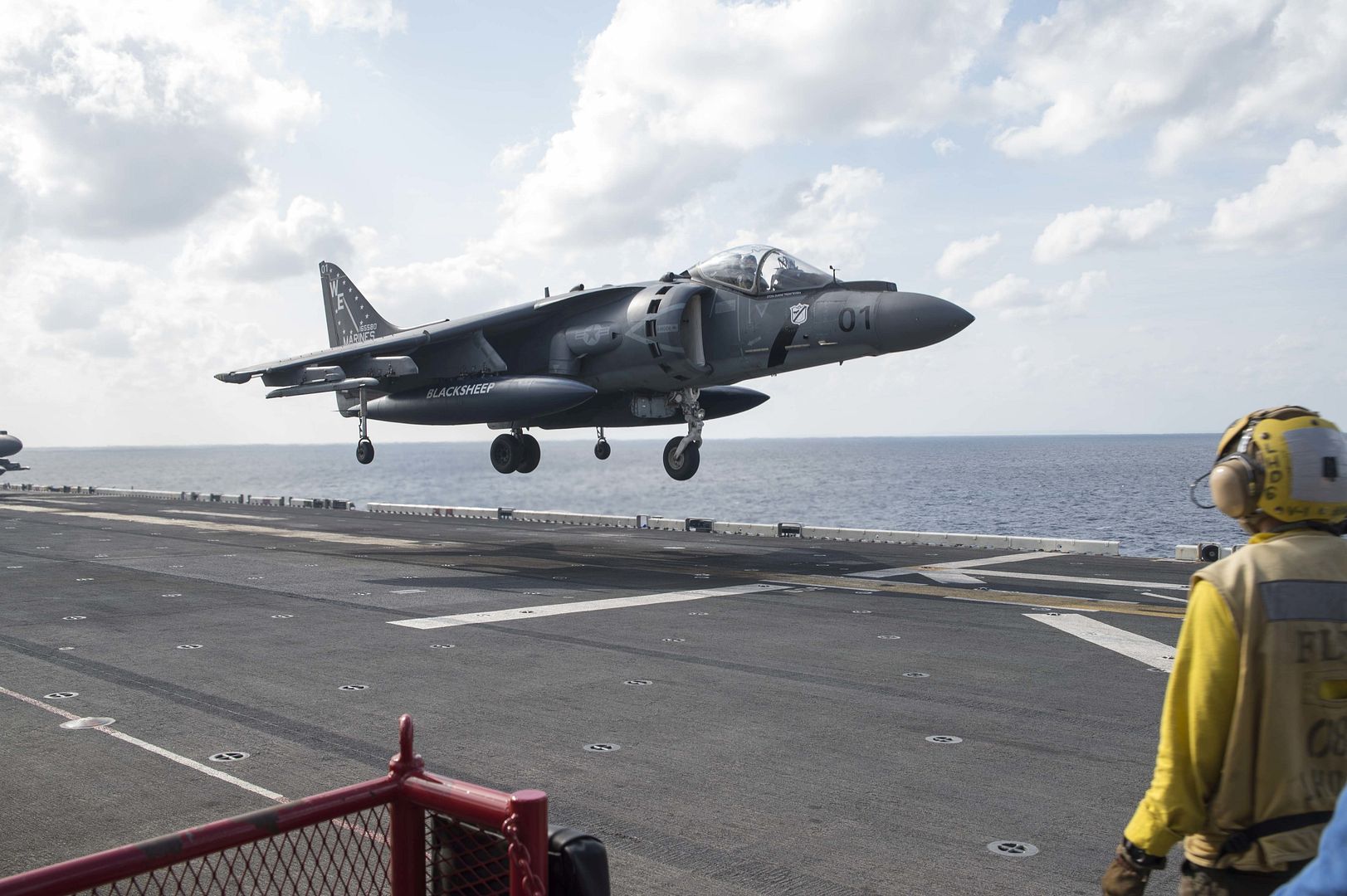
Pilots with 16th Combat Aviation Brigade, 7th Infantry Division, Joint Base Lewis-McChord, Wash., land an AH-64 Apache helicopter at Yakima Training Center, Yakima, Wash., Feb. 25. Pilots with 16th CAB performed surveillance and support by fire during a combined arms field exercise. (U.S. Army photo by Sgt. Cody Quinn/28th Public Affairs Detachment)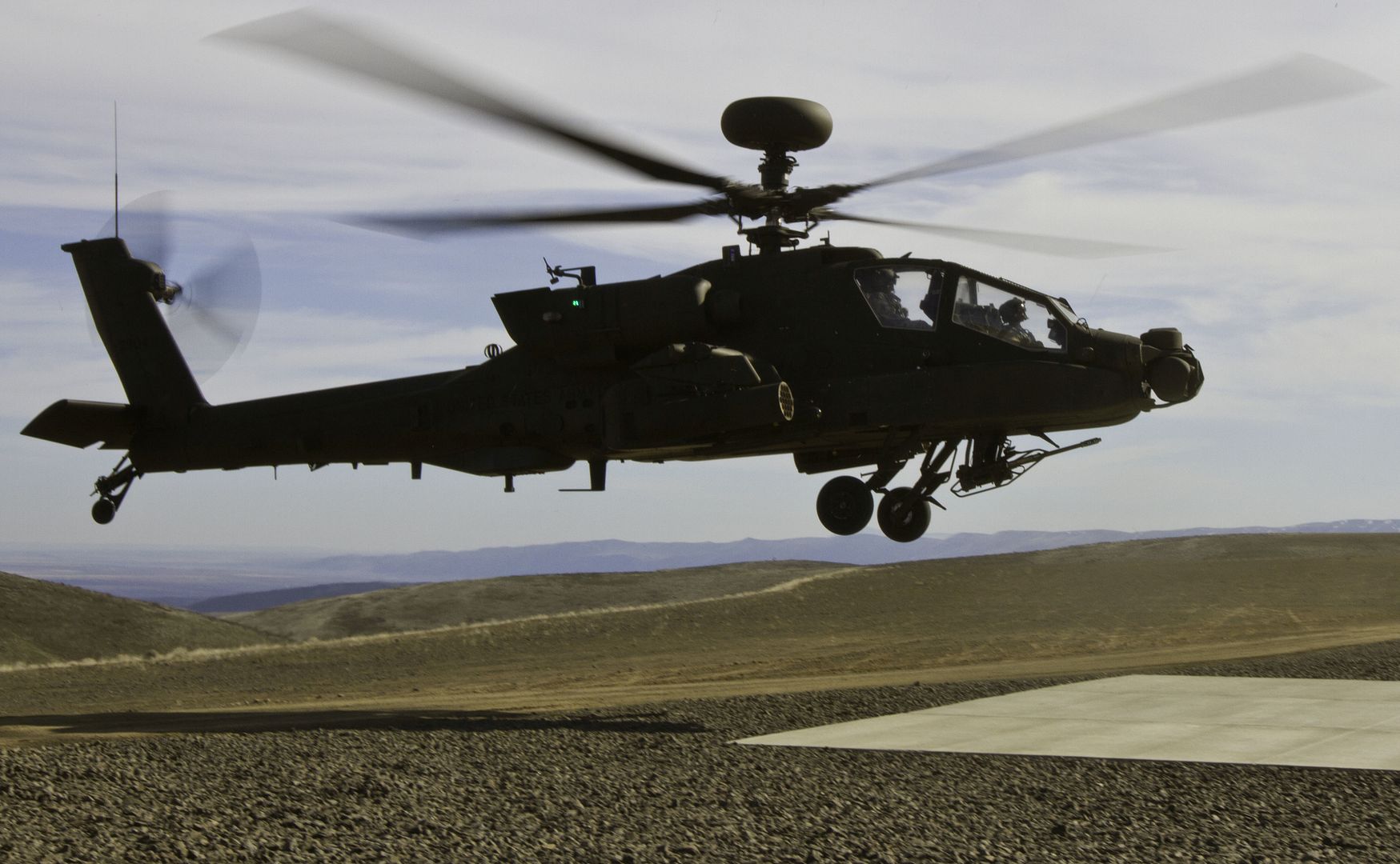
OSAN AIR BASE, South Korea (AFNS) -- The 51st Fighter Wing hosted Buddy Wing 16-2 at Osan Air Base Feb. 22-25, showcasing Airmen from the 25th Fighter Squadron and Aircraft Maintenance Unit.
South Korean air force pilots and maintainers from the 237th FS at Wonju Air Base, traveled to Osan AB in a continued effort to support the alliance.
?The Buddy Wing exercise creates an opportunity to share knowledge and discuss and improve processes that can be tactically developed by both (South Korean air force) KA-1 and U.S. Air Force A-10 (Thunderbolt II) pilots,? said Maj. Hwang, Jung-hwan, a 237th FS pilot. ?This Buddy Wing will grant an opportunity for us to prepare and be ready to cope with unexpected situations we have never experienced in person by performing practical training where our (South Korean air force) may lack.?
Members participating in Buddy Wing 16-2 trained to build relationships and broaden their knowledge of working in a joint environment with continued training operations aimed at deterring enemy aggression.
U.S. Air Force A-10s from the 25th FS integrated with South Korean air force KA-1 Woongbi fighter aircraft from the 237th FS to perform close air support missions.
?Buddy Wing is conducted quarterly to integrate and conduct joint, combined missions,? said 1st Lt. Samantha Latch, a 25th FS A-10 pilot. ?As we fly and train together, not only are we getting to know them, but we?re increasing our capability to work together.
After 62 years, the South Korean and U.S. alliance continues to be one of the longest standing and successful alliances in modern history. Exercises such as Buddy Wing, along with other combined operations and training events, add to the continued success.
?The exercise promotes mutual understanding and motivation to maintain a strong alliance between (South Korea) and U.S.,? Hwang said.
Buddy Wing 16-2 is the second in a series of joint training, combat exercises conducted in 2016 across the peninsula.
Pilots from the South Koreas air force?s 237th Fighter Squadron at Wonju Air Base watch an A-10 Thunderbolt II take off during Buddy Wing 16-2 on Osan Air Base, South Korea, Feb. 23, 2016. Buddy Wing 16-2 is the second in a series of joint training, combat exercises to be conducted during 2016 across the peninsula. The exercises strengthen the South Korean and U.S. alliance. (U.S. Air Force photo/Senior Airman Kristin High)
South Korean air force crew chiefs from the 237th Fighter Squadron conduct a preflight inspection on the KA-1 Woongbi during Buddy Wing 16-2 on Osan Air Base, South Korea, Feb. 23, 2016. Buddy Wing 16-2 is the second in a series of joint training, combat exercises to be conducted this year across the peninsula. The exercises strengthen the South Korean and U.S. alliance. (U.S. Air Force photo/Senior Airman Kristin High)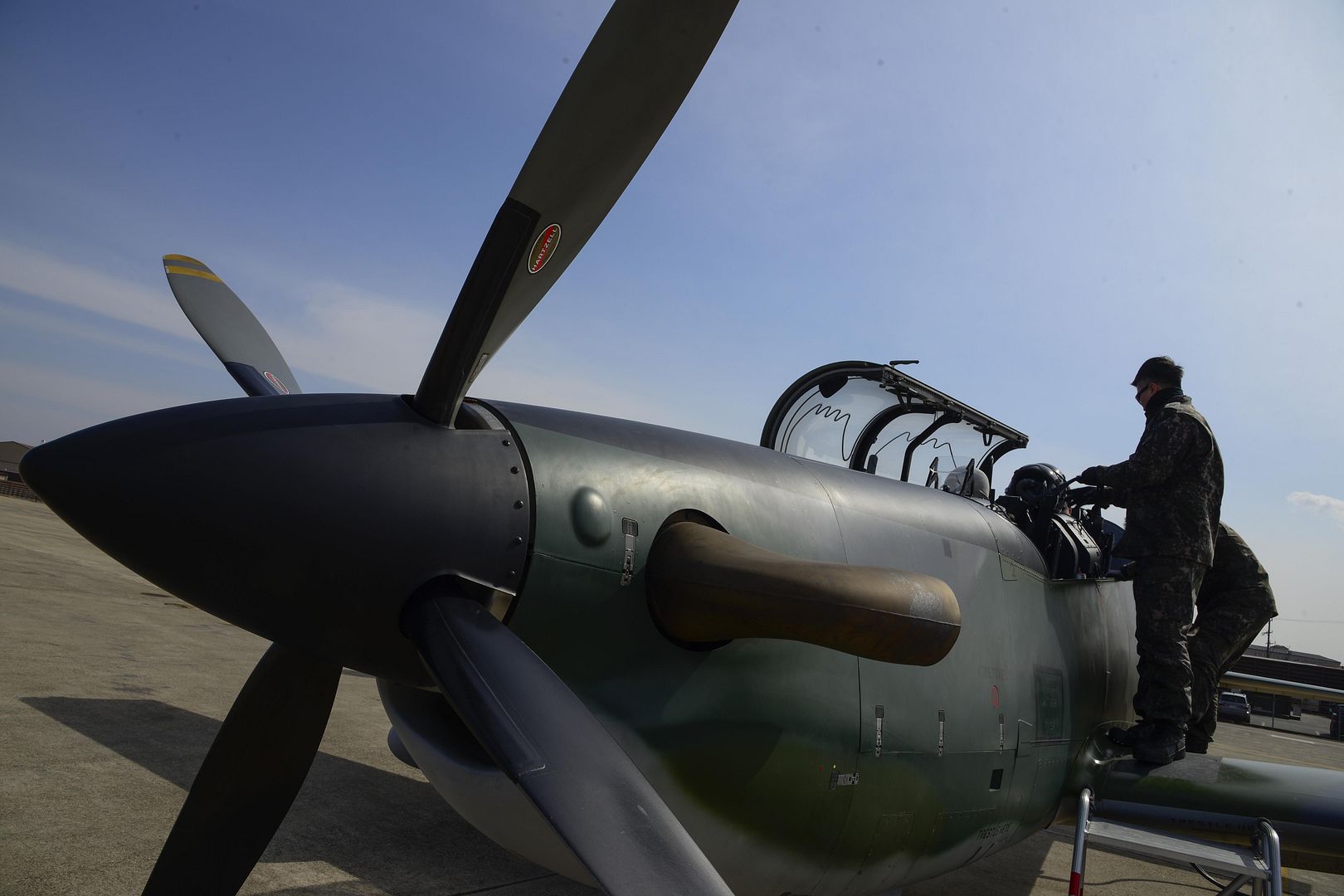
S?o Jos? dos Campos, Brazil, February 25th, 2016 ? Embraer, the world's leading manufacturer of commercial jets up to 130 seats, today took a step in the consolidation of its leadership by presenting the E190-E2, the first E2 jet ? Embraer?s second generation of the E-Jets family of commercial aircraft. The aircraft?s maiden flight is scheduled for the second half of 2016, with entry into service scheduled for 2018. The ceremony was held at the Company?s plant in S?o Jos? dos Campos.
?Today we have taken another step into the future of Embraer commercial aviation with the world premiere of our second-generation E-Jets,? said Paulo Cesar Silva, President & CEO, Embraer Commercial Aviation. ?I?m sure that as a result of this event, the market?s interest in the E2 will grow even further, increasing the commercial success of this program throughout the world.?
With an investment of USD 1.7 billion, the E2 program was launched in June 2013 and reinforces Embraer's commitment to continuously invest in its commercial aviation products as well as maintain market leadership in the segment of 70 to 130 seats. The aircraft will have state-of-the-art engines, which, combined with new aerodynamically advanced wings, full fly-by-wire flight controls, and improvements to other systems, will deliver significant reductions in fuel burn, maintenance costs, emissions, and external noise.
Since the E2 was launched, the program has reached 640 commitments, 267 of which are firm orders and 373 of which are options and purchase rights, from both airline customers and leasing companies. Currently, the E-Jets are operating with about 70 customers in 50 countries and, with over 50% market share, they are the global leader in the segment of aircraft with up to 130 seats.
?The rollout held today marks the completion of the assembly of the first E190-E2 and paves the way for the start of the tests that will lead to the first flight,? said Lu?s Carlos Affonso, Senior Vice President Operations & COO, Embraer Commercial Aviation. ?We are delighted to reach this phase of the program, considering all of the technical and economic objectives set out at its inception.?
This aircraft is the first of four prototypes that will be used in the E190-E2 certification campaign. Two additional planes will be added for the E195-E2 campaign, entry into service for which is expected in 2019, and three more will be used in the E175-E2 campaign, which is scheduled to enter service in 2020.
The E190-E2 has the same number of seats as the current generation E190 and can be configured with 97 seats in dual class service or with 106 seats in a single class layout. Additionally, the range of the E190-E2 has been significantly increased over the current generation aircraft, by 400 nautical miles, with the capacity to cover distances of 2,800 nautical miles.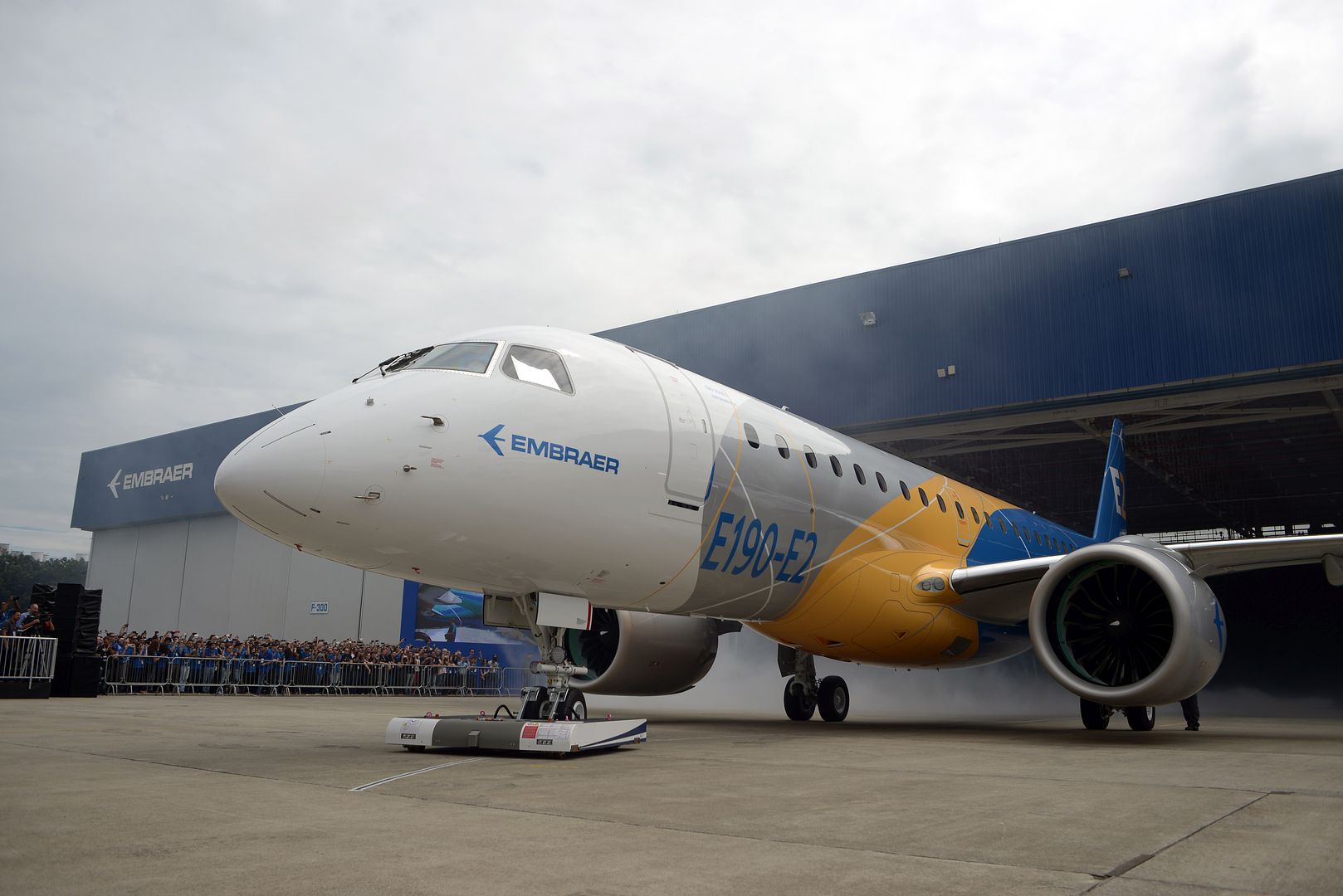
-
 Main AdminAn A-10 Warthog participates in a joint air attack team exercise at Yakima Training Center, Wash., Feb. 26. The exercise was the culmination of three weeks of training between members of the Air Force, Navy and Soldiers with 1-2 Stryker Brigade Combat Team, Joint Base Lewis-McChord, Wash. AH-64 Apache helicopters, M777 howitzers, high mobility artillery rocket systems and Warthogs delivered live ordnance to a target in a matter of minutes during the exercise. (U.S. Army photo by Sgt. Cody Quinn/28th Public Affairs Detachment)
Main AdminAn A-10 Warthog participates in a joint air attack team exercise at Yakima Training Center, Wash., Feb. 26. The exercise was the culmination of three weeks of training between members of the Air Force, Navy and Soldiers with 1-2 Stryker Brigade Combat Team, Joint Base Lewis-McChord, Wash. AH-64 Apache helicopters, M777 howitzers, high mobility artillery rocket systems and Warthogs delivered live ordnance to a target in a matter of minutes during the exercise. (U.S. Army photo by Sgt. Cody Quinn/28th Public Affairs Detachment)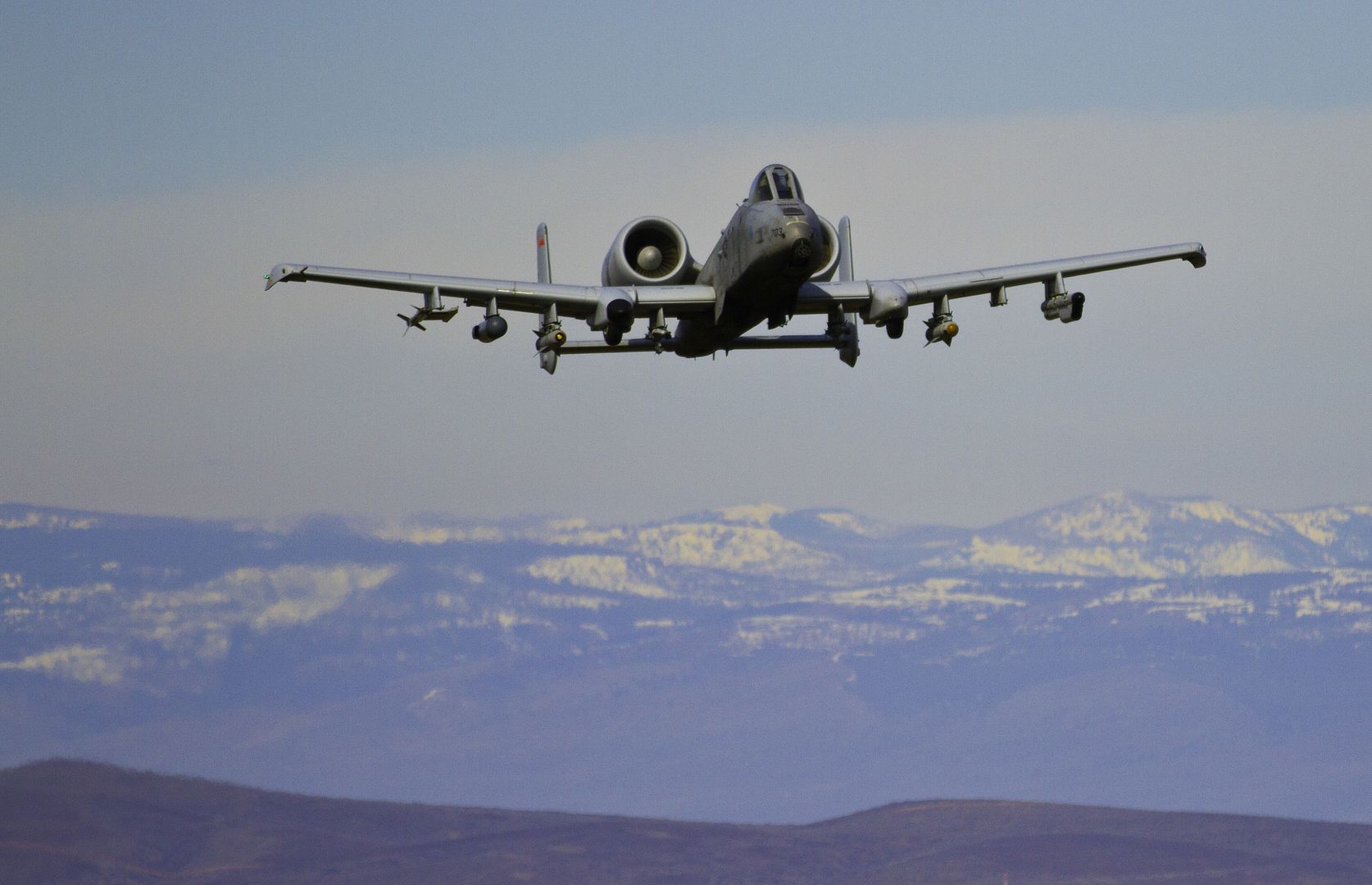
24 February 2016 Feature story
Airbus has reached another A350 XWB programme milestone with start-up of A350-1000 horizontal tail plane deliveries from the company?s Getafe, Spain facility.
The initial A350-1000 horizontal tail plane will be integrated on Airbus? no. 1 flight test aircraft, which currently is going through its final assembly process in Toulouse, France, as per planning.
Commenting on the delivery, Luis Guerra Pena ? Product Development Team leader A350-1000 Rear Fuselage Empennage in Spain ? said that Airbus? Getafe facility ?has written another page in Spanish aeronautical history.? He added this delivery is another sign of Airbus in Spain?s commitment to the programme, with the team deserving to be proud of its excellent work.
The A350-1000 is the longest-fuselage member of Airbus? A350 XWB family, and its horizontal tail plane is identical to the baseline A350-900 version ? which entered commercial operations in January 2015.
Airbus production facilities in Spain are responsible for the manufacture of horizontal tail planes used on all Airbus aircraft. For the A350-900 and A350-1000, the tail plane has a 19-metre span and a surface area of 82 square metres.
WASHINGTON (AFNS) -- Air Force Secretary Deborah Lee James revealed the first rendering of the Long Range Strike Bomber, designated the B-21, at the Air Force Association?s Air Warfare Symposium Feb. 26 in Orlando, Fla., and announced the Air Force will be taking suggestions from Airmen to help decide the name of the bomber.
?This aircraft represents the future for our Airmen, and (their) voice is important to this process,? James said. ?The Airman who submits the selected name will help me announce it at the (Air Force Association) conference this fall.?
While there are no existing prototypes of the aircraft, the artist rendering is based on the initial design concept. The designation B-21 recognizes the LRS-B as the first bomber of the 21st century.
The reveal comes just weeks after both James and Air Force Chief of Staff Gen. Mark A. Welsh III delivered the fiscal year 2017 posture statement before the Senate Appropriations Committee, making it clear modernization is a top priority for the Air Force.
?The platforms and systems that made us great over the last 50 years will not make us great over the next 50,? Welsh said during his testimony on Capitol Hill Feb. 10. ?There are many other systems we need to either upgrade or recapitalize to ensure viability against current and emerging threats? the only way to do that is to divest old capability to build the new.?
James said the B-21 will allow the Air Force to operate in tomorrow's high end threat environment, and give the Air Force the flexibility and the capability to launch from the continental United States and deliver airstrikes on any location in the world.
James also explained why the B-21 shares some resemblance to the B-2.
?The B-21 has been designed from the beginning based on a set of requirements that allows the use of existing and mature technology,? James said.
The program recently entered into the Engineering and Manufacturing Development phase and the Air Force plans to field the initial capability of the aircraft in mid-2020s.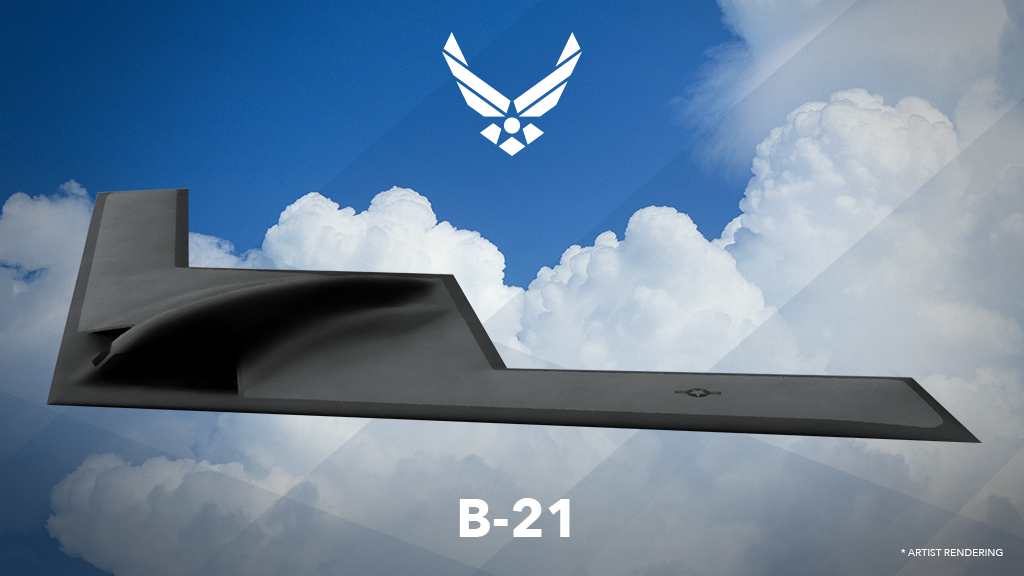
-
 Main AdminA French Dassault Rafale fighter aircraft flies toward a KC-135 Stratotanker assigned to RAF Mildenhall, England, during a refueling mission in support of Operation Juniper Micron over North Africa, Feb. 26, 2016. Since 2013, the U.S has been supporting the French government in OJM by providing air refueling and airlift support of French operations in Mali and North Africa. (U.S. Air Force photo's by Senior Airman Erin Trower/Released)
Main AdminA French Dassault Rafale fighter aircraft flies toward a KC-135 Stratotanker assigned to RAF Mildenhall, England, during a refueling mission in support of Operation Juniper Micron over North Africa, Feb. 26, 2016. Since 2013, the U.S has been supporting the French government in OJM by providing air refueling and airlift support of French operations in Mali and North Africa. (U.S. Air Force photo's by Senior Airman Erin Trower/Released)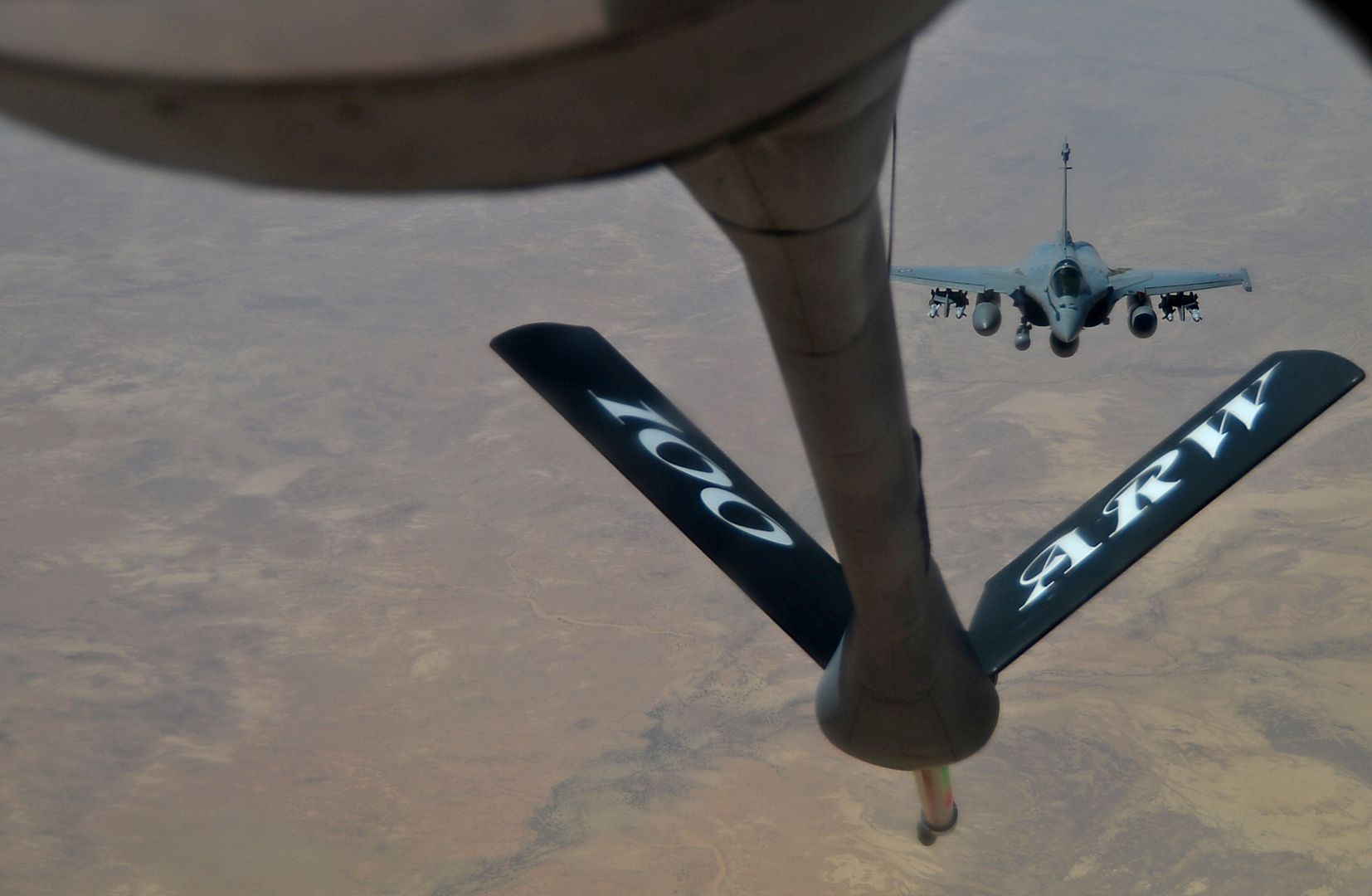

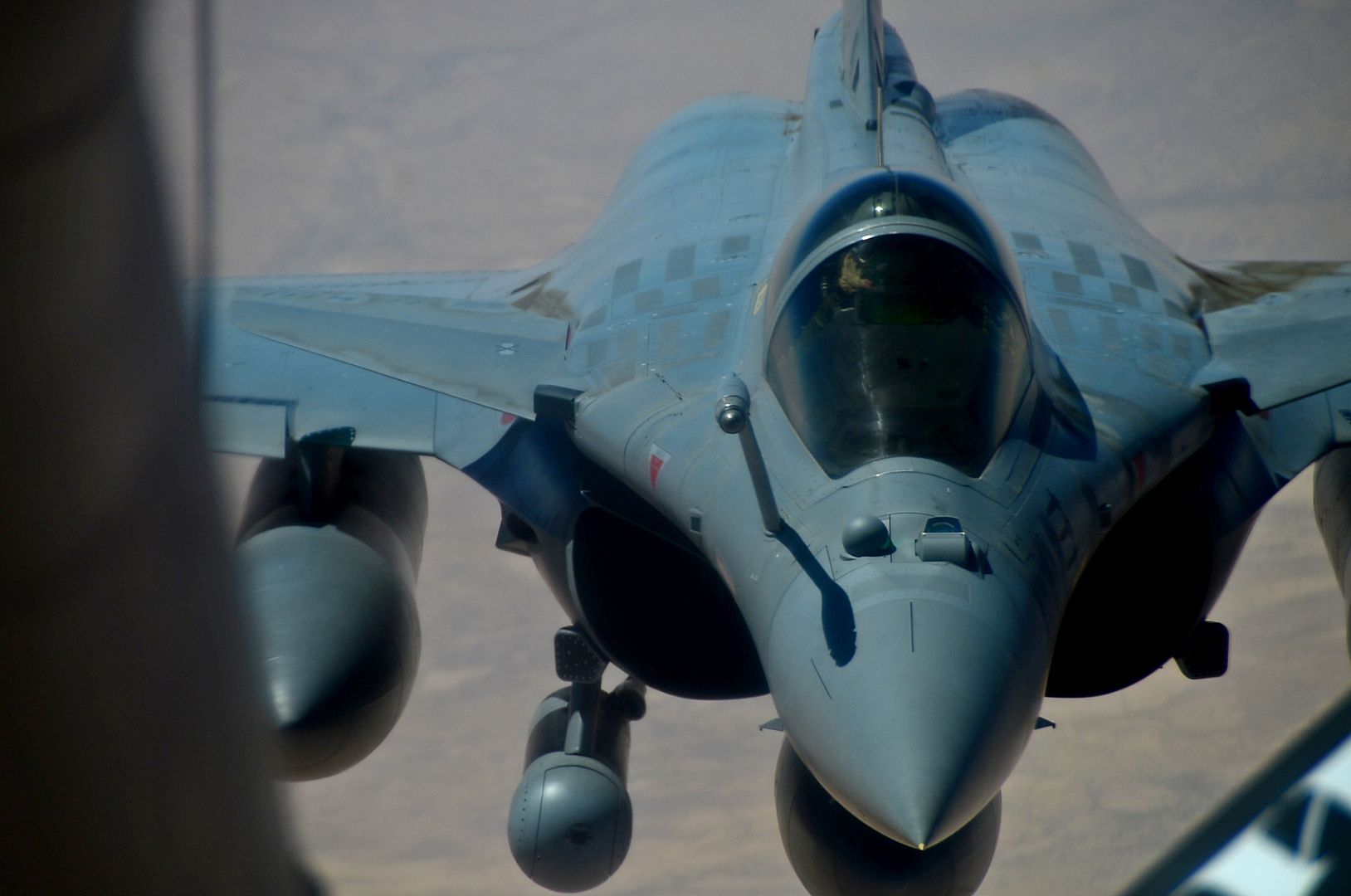

A French Dassault Rafale fighter aircraft provides mission support after receiving fuel froma KC-135 Stratotanker assigned to RAF Mildenhall, England, in support of Operation Juniper Micron over North Africa, Feb. 26, 2016. Three KC-135 Stratotankers, along with 50 Airmen from the 100th Air Refueling Wing, are providing air refueling and airlift support to French operations in Mali and North Africa in support of OJM. (U.S. Air Force photo by Senior Airman Erin Trower/Released)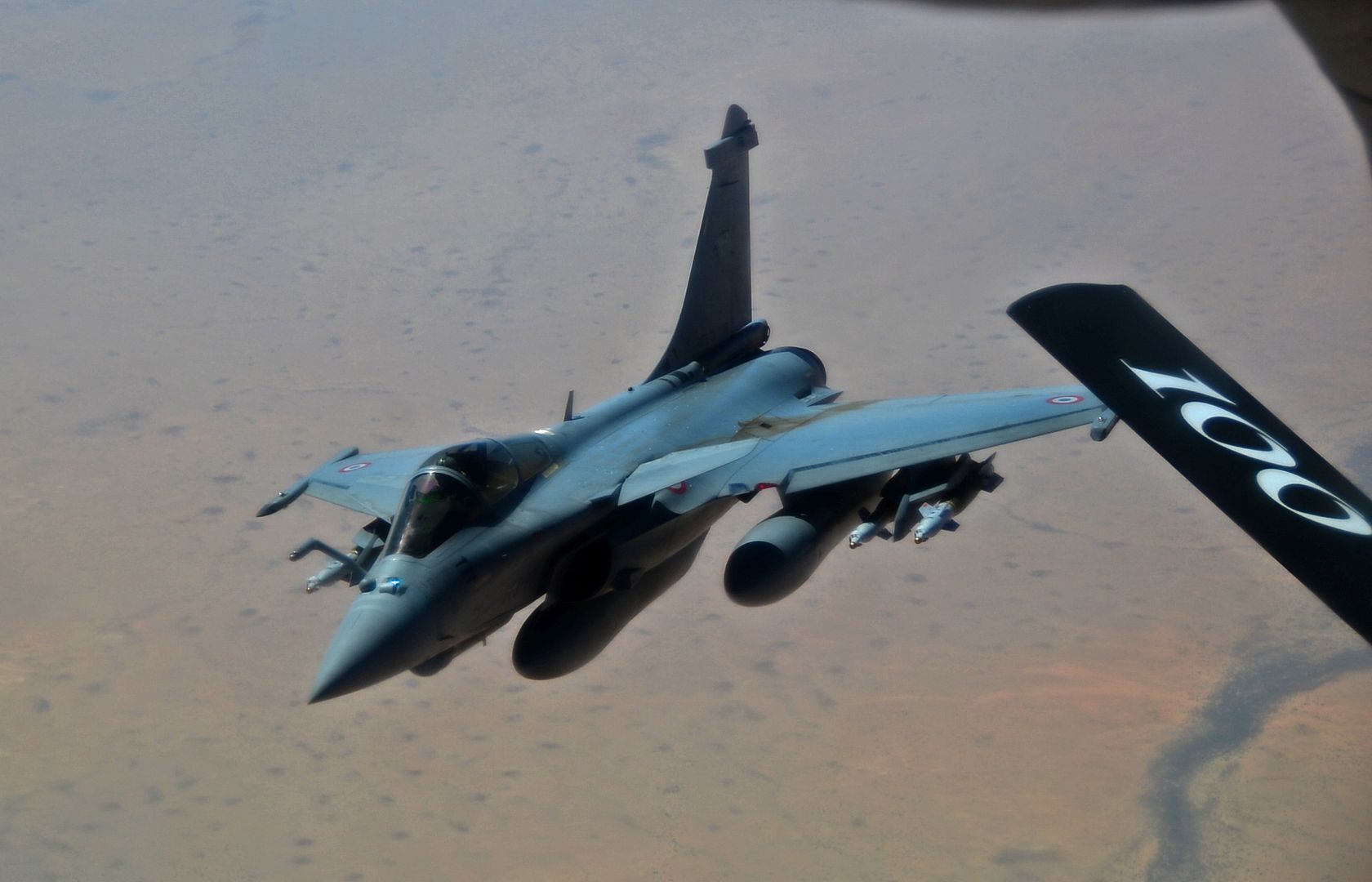
MOR?N AIR BASE, Spain (AFNS) -- B-52 Stratofortresses from Barksdale Air Force Base, Louisiana, arrived in Europe Feb. 27, in preparation for their participation in a large-scale NATO training exercise.
This year's iteration of the biennial Cold Response will be held in the central Tr?ndelag region of Norway and feature air, ground and maritime operations. Approximately 16,000 troops from a dozen nations will participate in the exercise, working together to collectively develop tactics, techniques and procedures for combat operations in an extreme cold-weather environment.
"We appreciate the opportunity to take part in such a large multinational exercise at the invitation of our Norwegian allies, and we are especially thankful for the opportunity to test our skills in such unique cold weather conditions," said Lt. Col. Dennis Cummings, the 2nd Expeditionary Bomb Group commander. "The ability to train bomber aircrews in different geographic combatant commands is essential to maintaining a strong, credible bomber force that enhances the security and stability of our allies and partners."
The B-52s will conduct multiple sorties over the course of the exercise, engaging in simulated strikes against ground targets inside the training area. As the Air Force's premier nuclear-capable, strategic heavy bomber, the B-52 is capable of delivering a large payload of precision nuclear or conventional ordnance over long distances while also providing decision makers the ability to rapidly project military power.
"Bomber participation in joint military exercises like this one are an expression of the U.S. commitment to supporting our allies and partners, demonstrating our shared dedication to promoting global security and stability," said Maj. Matt Spinelli, the 2nd EBG assistant director of operations.
The B-52s will join with KC-135 Stratotankers and F-16 Fighting Falcons to serve as the American air component for the duration of Cold Response 16. A number of C-130 Hercules will also be on hand to provide support to ground forces.
"This exercise provides a great opportunity for allies to train together and better understand how we each operate and communicate," Cummings said. "The increased understanding and cooperative efforts between our countries enable us to work together effectively, while also addressing any and all security challenges that may arise in the region or other parts of the world."
Cold Response 16 is scheduled to run through March 9.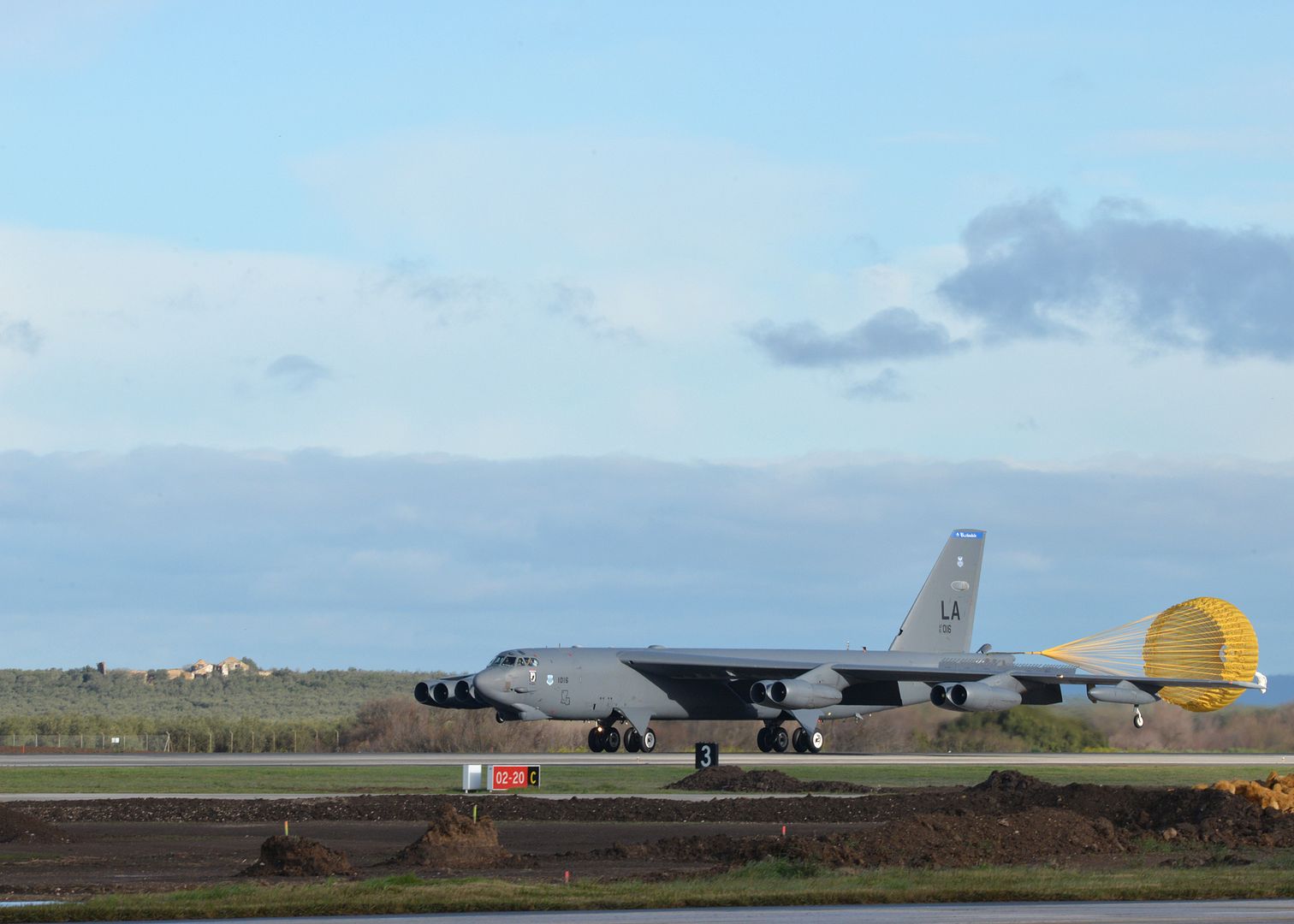

HILL AIR FORCE BASE, Utah (AFNS) -- Airmen from the 388th and 419th fighter wings dropped laser-guided bombs at the Utah Test and Training Range the week of Feb. 25, marking the first time an F-35 Lightning II combat unit has deployed weapons from the F-35A.
Lt. Col. George Watkins, the 34th Fighter Squadron commander, said dropping weapons from the F-35 allows pilots to more fully engage the aircraft and confirm that everything works as planned.
?This is significant because we?re building the confidence of our pilots by actually dropping something off the airplane instead of simulating weapon employment,? Watkins said.
Air Force F-35s have dropped weapons in test environments, but this is the first time it?s been done on jets designed to deploy once the Air Force declares initial operational capability, which it plans to do between August and December. IOC will be announced when the Air Force deems the F-35 combat capable.
Lt. Col. Darrin Dronoff, the director of Hill?s F-35 Program Integration Office, said that while this achievement is a significant step toward Air Force IOC, the milestone goes beyond that mark.
?The pilots and weapons loaders in the 388th and 419th fighter wings are perfecting their skills not only to prove aircraft capabilities, but they?ll also be the Airmen called upon to take the F-35 to combat, whenever that call may come,? he said.
Hill?s F-35 pilots will begin flying the F-35 in four-ship formations, which is the standard configuration flown in contested combat scenarios, as early as March.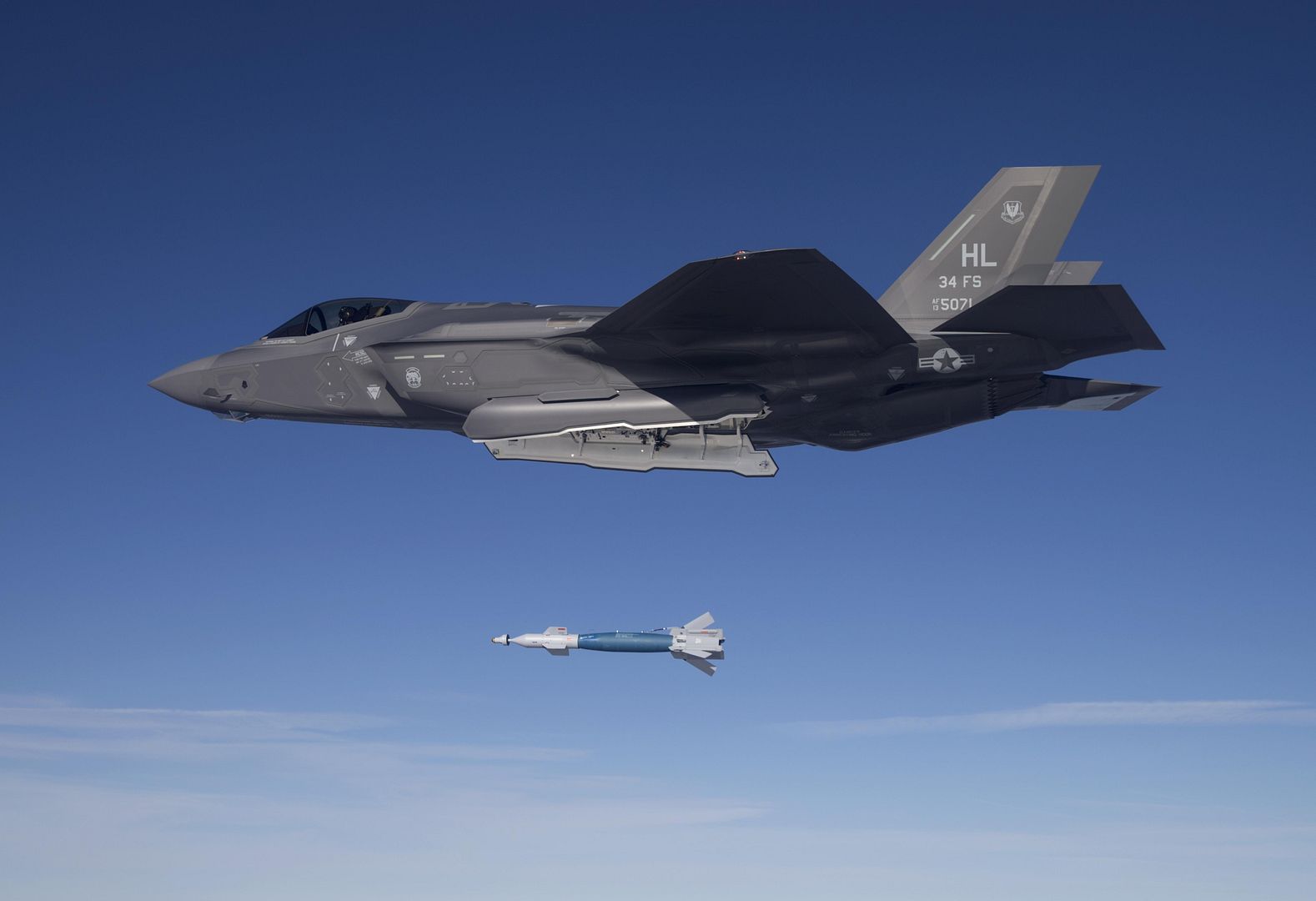
-
 Main AdminEA-6B Prowlers assigned to 2nd Marine Aircraft Wing's Prowler Squadrons (VMAQT-1, VMAQ-2, 3, and 4) conduct an aerial refuel and formation flight near Cherry Point, N.C., March. 1, 2016. The flight was the first time in several years that all 4 EA-6B Prowler squadrons flew together. (U.S. Marine Corps photo's by Cpl. Jodson B. Graves/Released)
Main AdminEA-6B Prowlers assigned to 2nd Marine Aircraft Wing's Prowler Squadrons (VMAQT-1, VMAQ-2, 3, and 4) conduct an aerial refuel and formation flight near Cherry Point, N.C., March. 1, 2016. The flight was the first time in several years that all 4 EA-6B Prowler squadrons flew together. (U.S. Marine Corps photo's by Cpl. Jodson B. Graves/Released)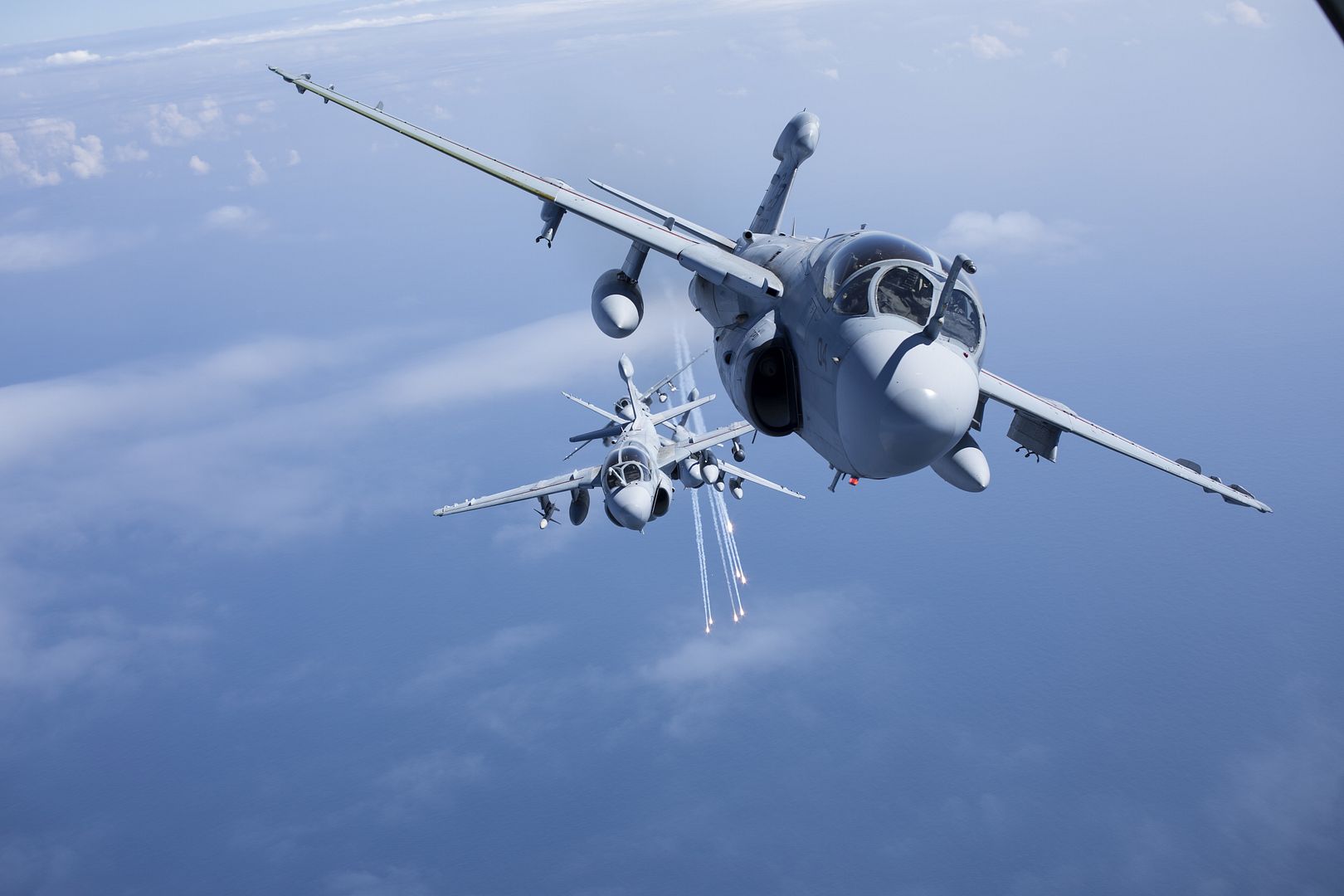
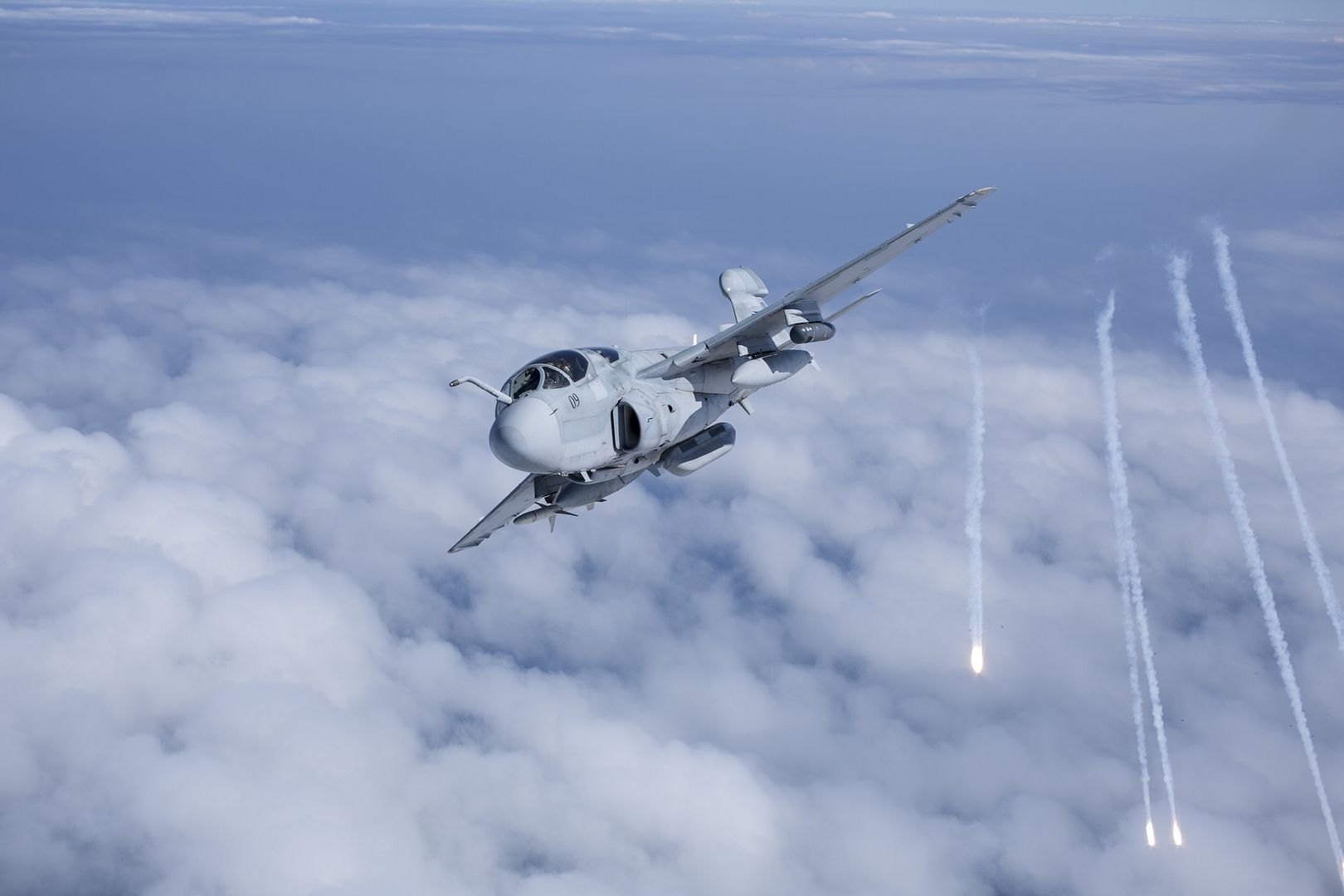
PACIFIC OCEAN (March 2, 2016) ? An AV-8B Harrier, attached to Marine Attack Squadron 214 (VMA-214) ?Blacksheep," lands on the flight deck of amphibious assault ship USS Bonhomme Richard (LHD 6). Bonhomme Richard is the flagship of the Bonhomme Richard Expeditionary Strike Group (BHRESG), assigned to Expeditionary Strike Group 7, Task Force 76, and is conducting a routine patrol in the U.S. 7th Fleet area of responsibility. (U.S. Navy photo by Mass Communication Specialist 2nd Class Naomi VanDuser/Released)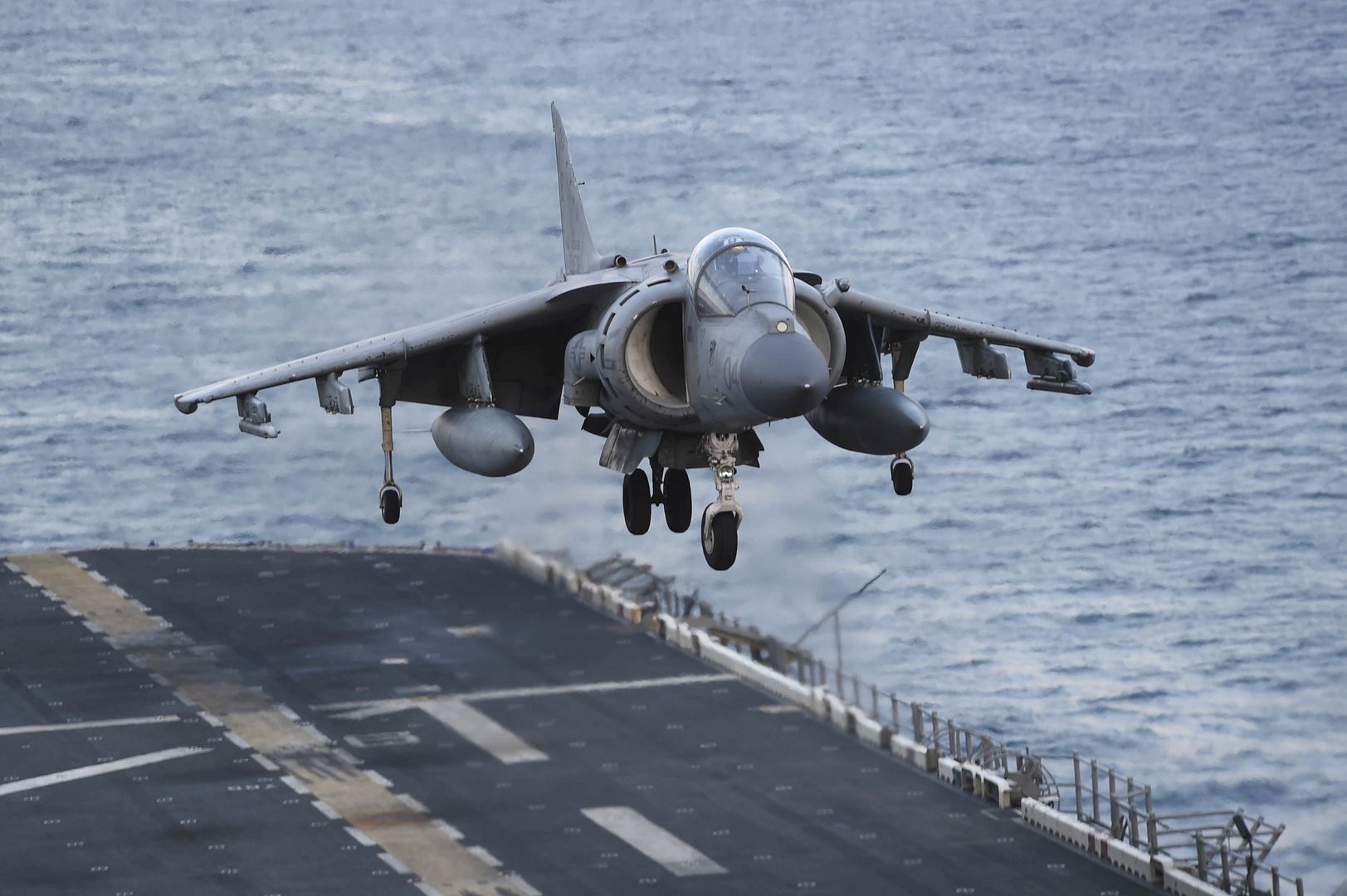
Marines with Marine Medium Tiltrotor Squadron (VMM) 265 arrive at Marine Corps Air Station Iwakuni, Japan, March 2, 2016. VMM-265 is part of the 31st Marine Expeditionary Unit and traveled to Iwakuni to provide support for exercise Ssang Yong in Korea. The exercise enhances U.S. and Republic of Korea interoperability, situational readiness and promotes stability on the Korean Peninsula. (U.S. Marine Corps photo by Lance Cpl. Aaron Henson/Released)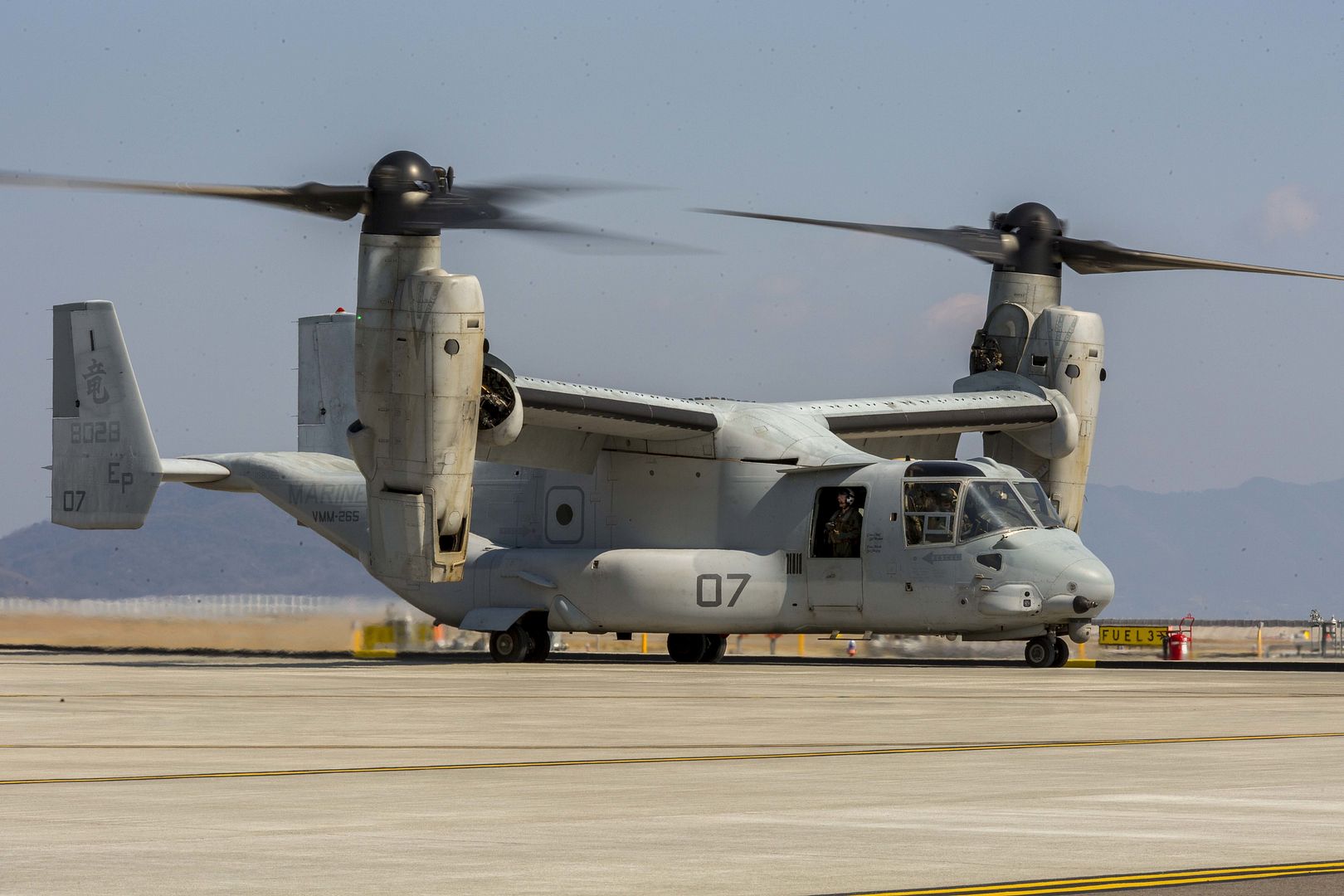
A CH-53E with Marine Heavy Helicopter Squadron (HMH-464) taxis on an airfield as part of Cold Response 16, March 1, 2016 at Namsos, Norway. Cold Response 16 is a Norwegian invitational previously-scheduled exercise that will involve approximately 15,000 troops from 13 NATO and partner countries. (Official Marine Corps Photo by Gunnery Sgt. Bryson K. Jones/Released)
2 March 2016 Press Release
Singapore Airlines has taken delivery of its first A350 XWB in Toulouse, France, becoming the fifth operator of the all-new widebody airliner. With its unrivalled passenger flying experience and operational efficiency, the A350 XWB will form the backbone of Singapore Airlines? future mid-size widebody fleet.
Singapore Airlines? aircraft is configured in a premium three class layout with 253 seats, comprising 42 Business Class, 24 Premium Economy and 187 Economy. After an initial period flying on regional services to Kuala Lumpur and Jakarta the aircraft will be deployed on long haul flights from May, starting with Amsterdam and then Dusseldorf.
Altogether the airline has ordered 67 A350-900s which will be operated on long range flights, as well as on selected regional services. Seven of the aircraft will be delivered with an ultra-long range capability for flights of up to 19 hours, allowing the carrier to resume non-stop flights to the US. The A350 XWB will join an existing Airbus fleet at Singapore Airlines that currently comprises 19 double decker A380s and 29 A330-300s, making the carrier an operator of the complete Airbus Widebody Family.
The A350 XWB is the world?s latest generation airliner and the newest member of Airbus? modern, comfortable & efficient widebody product family. It features the latest aerodynamic design, carbon fiber fuselage and wings, plus new fuel-efficient Rolls-Royce Trent XWB engines. Together, these latest technologies translate into unrivalled levels of operational efficiency, with a 25 per cent reduction in fuel burn and emissions, and significantly lower maintenance costs.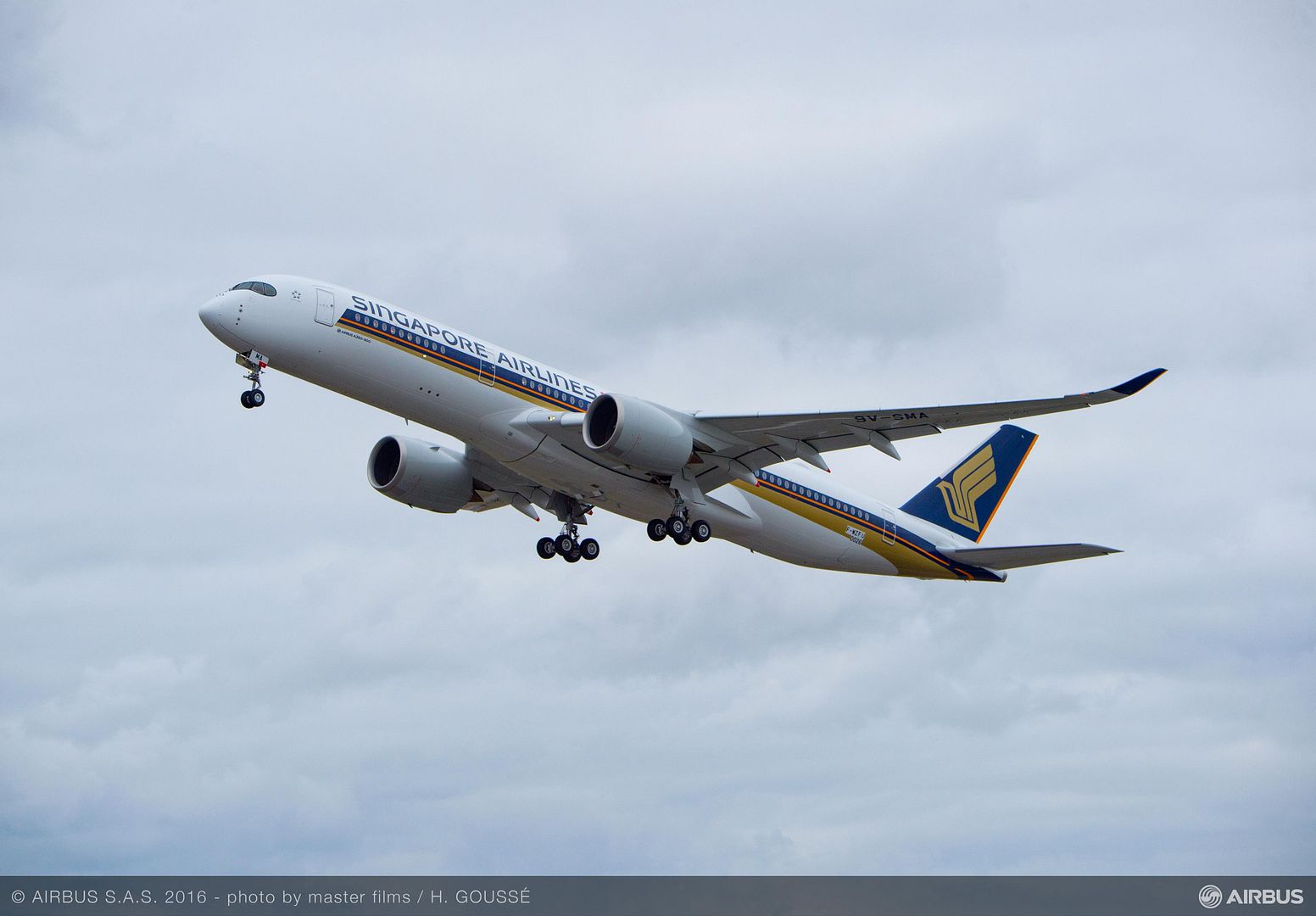
-
 Main AdminJOINT BASE ELMENDORF-RICHARDSON, Alaska (AFNS) -- From the northernmost to the southernmost point, Alaska measures 1,420 miles -- the distance from Denver to Mexico City. Alaska has more than 600,000 square miles of land, and some locations are inaccessible, except by air.
Main AdminJOINT BASE ELMENDORF-RICHARDSON, Alaska (AFNS) -- From the northernmost to the southernmost point, Alaska measures 1,420 miles -- the distance from Denver to Mexico City. Alaska has more than 600,000 square miles of land, and some locations are inaccessible, except by air.
C-12F Huron pilots assigned to the 517th Airlift Squadron provide air support for those locations. Currently, there are only two Hurons in the Air Force inventory, and both are at Elmendorf.
"The C-12 mission is unique because we are specifically here for the home defense mission; our main mission is to support the radar site to make sure it is up and running," said Capt. David Blessinger, a 517th AS C-12 pilot. "Without the site, we cannot track unauthorized aircraft in our national air space."
For quarterly inspections or emergency repairs, the pilots bring maintenance personnel to remote outposts and provide operational support airlift.
"We often get short-notice requests to get a crew out to these remote locations to replace parts that have failed," Blessinger said. "Some of these sites actually use the same radar that the (Federal Aviation Administration) uses for their air traffic control, so they're definitely time-critical."
Pilots require special qualifications to fly those remote locations, so they have to go through extensive site training.
Pilots have to complete the site upgrade syllabus which includes about 30 hours of flying, spot-landing training, and instructor-supervised landings at each of the seven remote long-range radar sites.
Many of the sites are one-way sites, meaning there is no ability to go around in the event the approach or landings are not flown correctly. This is usually because of an issue with the terrain or the other end of the runway is challenging.
"Additionally, because of the remote locations, weather forecasting capability is not as good, so the pilots have to juggle rapidly changing weather conditions, difficult runway conditions and challenging terrain, with little margin for error," said Lt. Col. Blake Johnson, the 517th AS C-12 director of operations.
The Huron allows a pilot to reach short, austere airfields. The aircraft can land on a runway 4,000 feet or less and on unprepared surfaces such as gravel. In some locations, the pilots also have to factor in uneven runways with a steep slope.
"There are numerous obstacles that present themselves," Blessinger added. "So we do this training to best prepare ourselves for anything that might arise, and to be acclimated to or familiar with those fields."
When training, the pilots are looking at many factors that will impact their mission.
Blessinger added they look for bigger picture factors like wind, possibility of snow or freezing precipitation, and how weather will affect their ability to take off again.
Often, they also have to think about their customers. If the customer needs to stay there for a few hours, they also have to look what the weather will be doing in that timeframe that might prevent them from taking off.
Other things they look for include wildlife; looking to see what are the birds doing, and if there are any moose on the runway.
"Before taking off, we look at the Bird Avoidance Model and (take) the BASH program into consideration," said Maj. Ryan Wong, a 517th AS C-12 pilot. "We also do our best to scan visually and avoid (mishaps)."
Most of these sites have ground personnel who monitor the runways and inform the pilots if there is any wildlife that would prevent them from landing.
"The ground personnel will do their best to scare them away so we can land," Wong said. "If nothing else (works), they will advise us to hold or try to land again, but (this scenario) rarely happens."
When a location such as a one-way will not allow the aircraft to land, the C-12s will return to Elmendorf and reschedule the mission.
Regardless of the hurdles the C-12 mission faces, it is the only active-duty Air Force aircraft and crew force currently qualified to perform the long-range radar site support mission.
"It has a pretty good range, carries a lot for the size that it is, and is able to operate in shorter field with less support," Wong said. "We need a versatile aircraft to get into these remote and austere locations, and the C-12 fits that."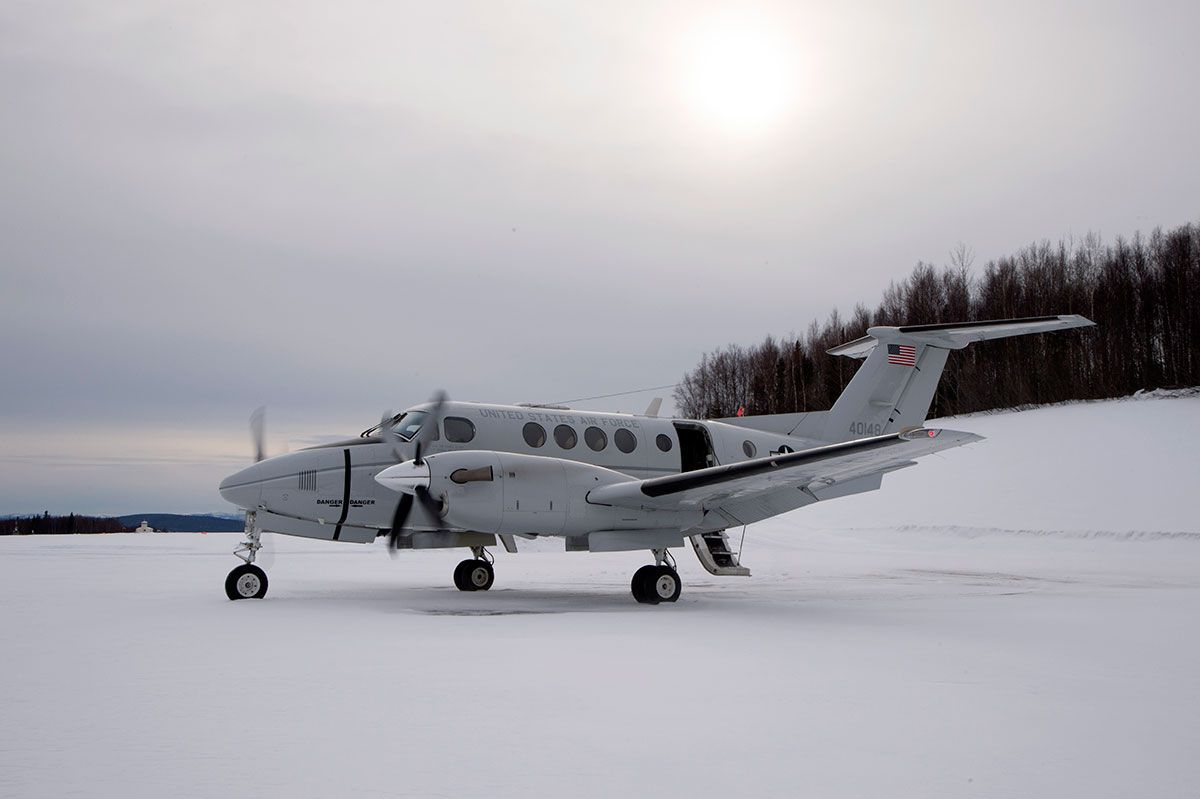
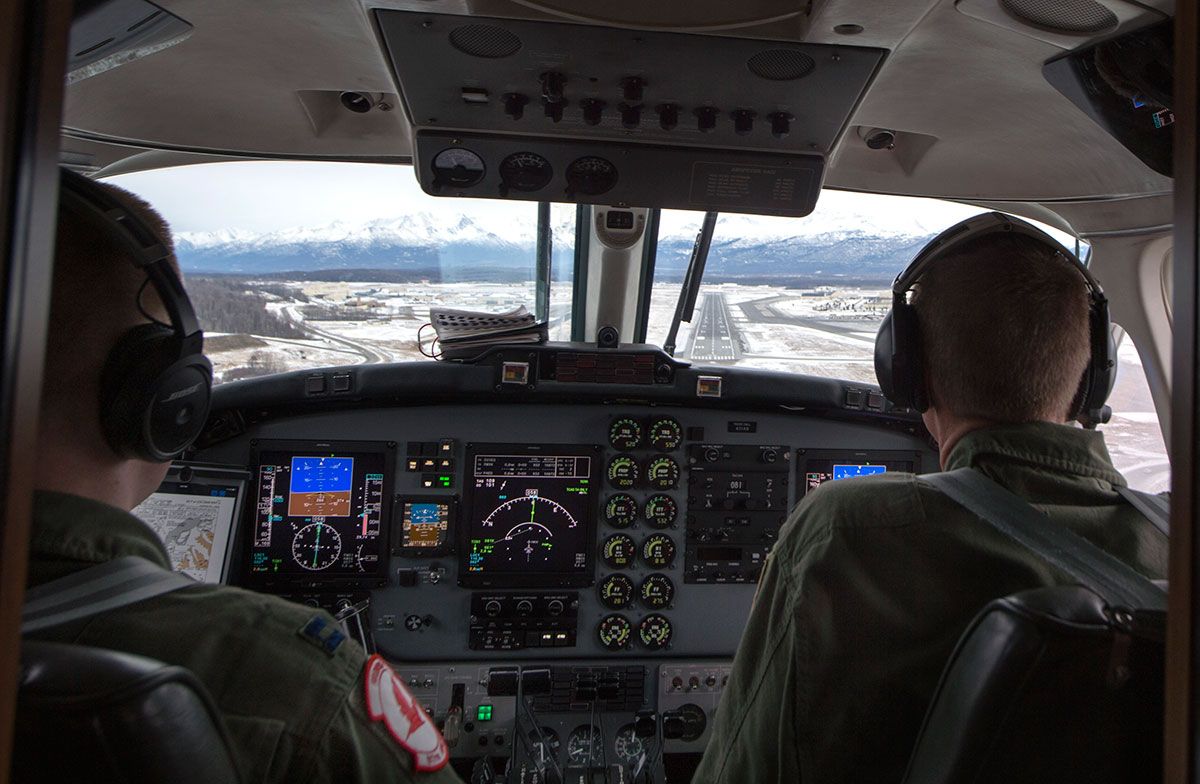
-
 Main AdminA B-52 Stratofortress from Barksdale Air Force Base, La., receives fuel from a KC-135 Stratotanker assigned to Royal Air Force Mildenhall, England, over the Tr?ndelag region of Norway, while participating in exercise Cold Response. The exercise featured maritime, land, and air operations to underscore NATO?s ability to defend against any threat in any environment. (U.S. Air Force photo/Senior Airman Victoria H. Taylor)
Main AdminA B-52 Stratofortress from Barksdale Air Force Base, La., receives fuel from a KC-135 Stratotanker assigned to Royal Air Force Mildenhall, England, over the Tr?ndelag region of Norway, while participating in exercise Cold Response. The exercise featured maritime, land, and air operations to underscore NATO?s ability to defend against any threat in any environment. (U.S. Air Force photo/Senior Airman Victoria H. Taylor)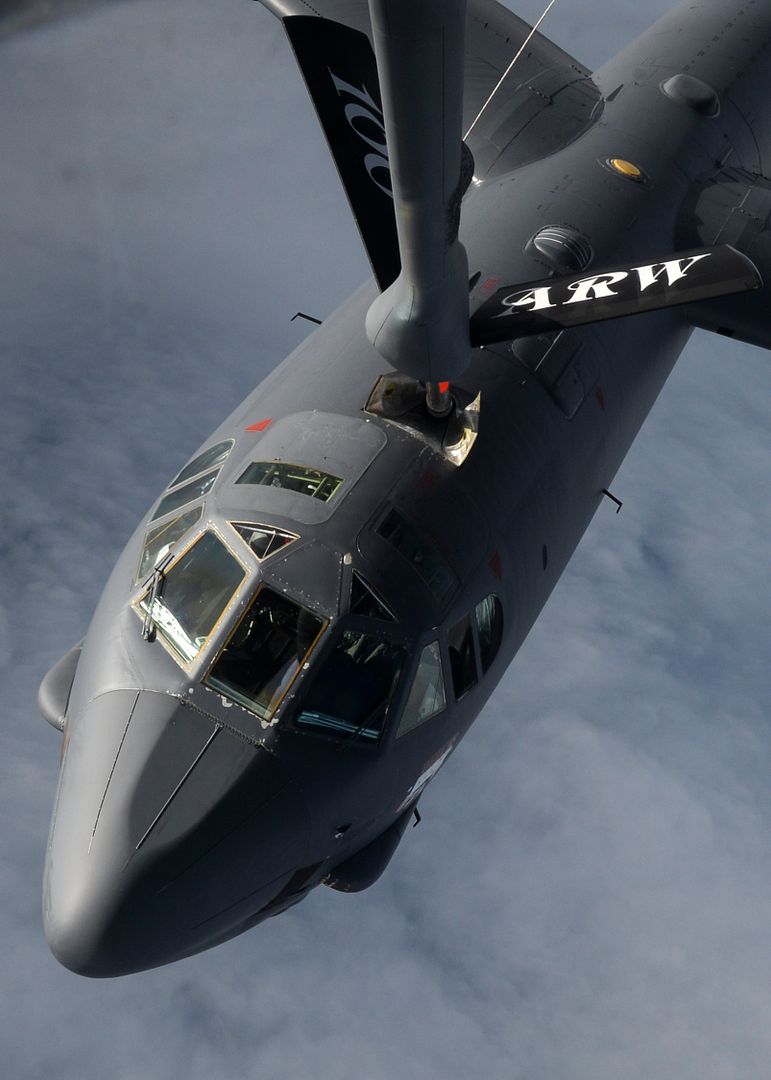
A U.S. Air Force Lockheed C-5 Galaxy aircraft sits quietly at the Stuttgart Army Airfield, Germany, March 2, 2016. (U.S. Army photo's by Visual Information Specialist Jason Johnston/Released)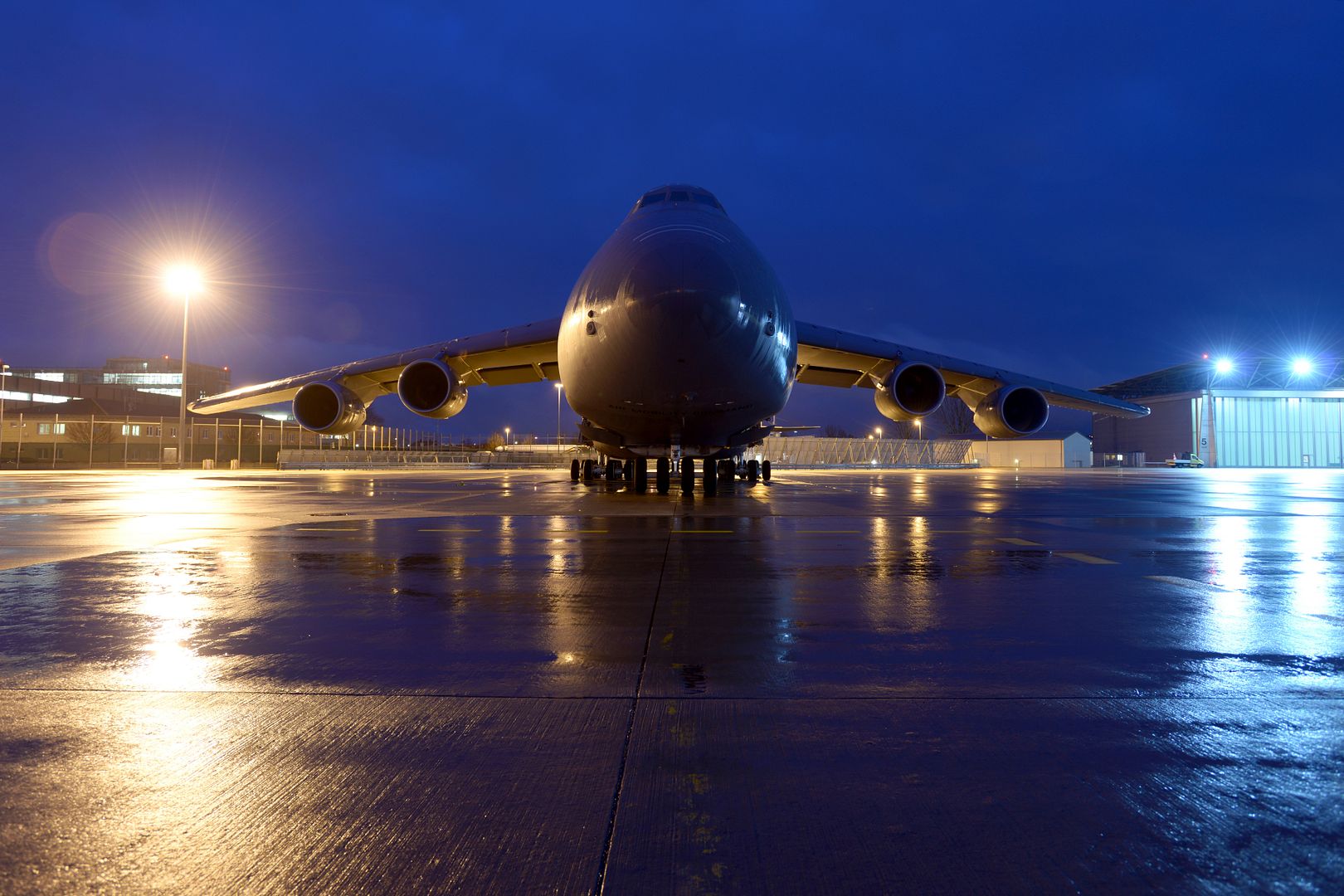
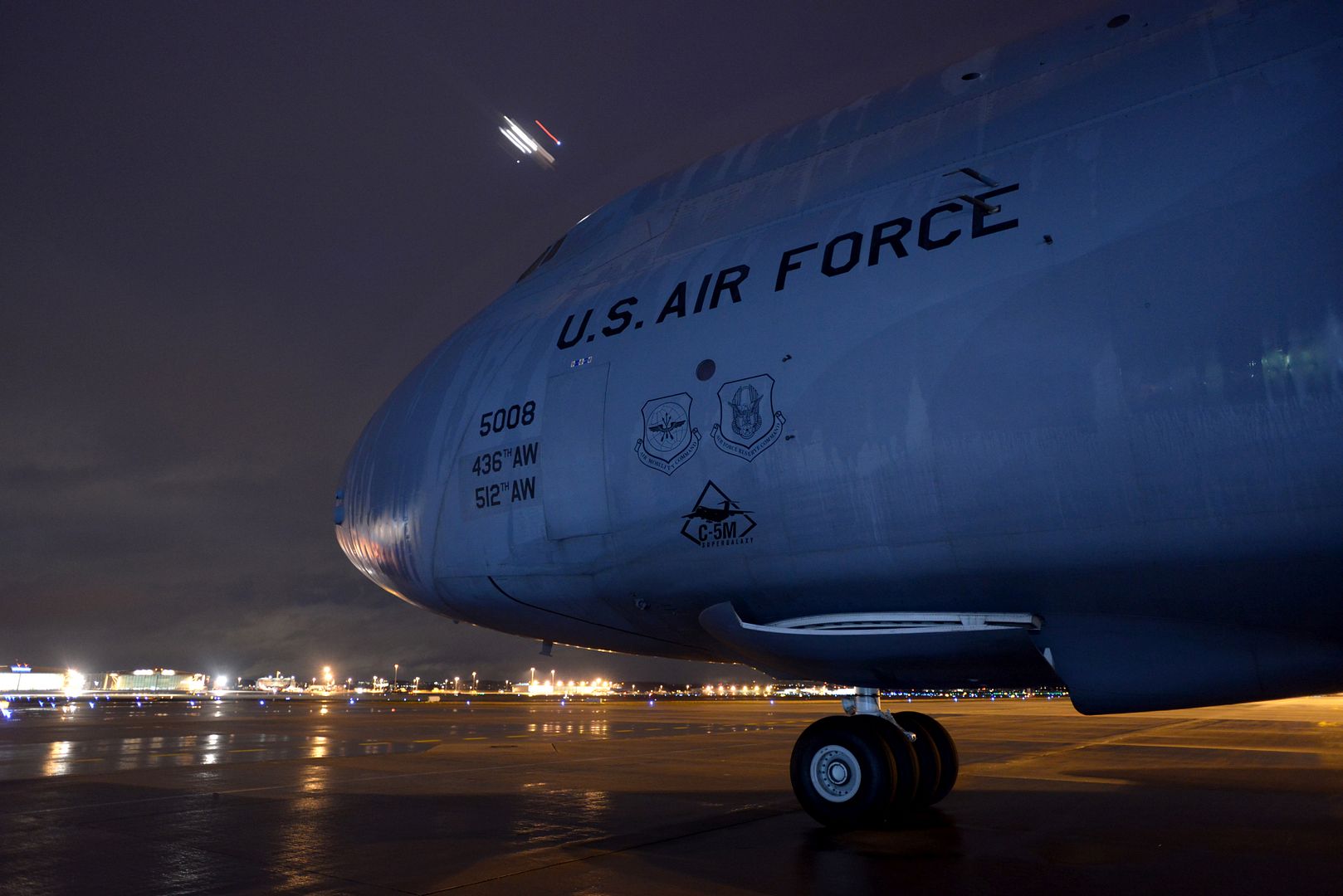
EVERETT, Wash., March 3, 2016 ? The Boeing [NYSE: BA] test team successfully completed the first flight of the program?s second KC-46A tanker aircraft yesterday, taking off from Paine Field and landing later at Boeing Field in Seattle.
During the flight, Boeing test pilots performed operational checks on engines, flight controls and environmental systems.
?Adding a second tanker to the flight test program is very important as we move into the next phase of testing,? said Col. John Newberry, U.S. Air Force KC-46 System program manager. ?The team will initially use the aircraft to test mission system avionics and exterior lighting. Later, it will share the air refueling effort with the first KC-46.?
The Boeing team now will conduct a post-flight inspection and calibrate instrumentation prior to the next series of flights. As part of the overall flight test program, the KC-46 will demonstrate it can refuel 18 different aircraft. The second tanker will help share the test load and receiver certification.
Boeing was awarded a contract in 2011 to design and develop the U.S. Air Force?s next-generation tanker aircraft and is building four test aircraft ? two are currently configured as 767-2Cs and two as KC-46A tankers.
EMD-1, a 767-2C test aircraft, has completed more than 260 flight test hours to date since its first flight in December 2014. EMD-2, the program?s first KC-46A tanker, made its maiden flight September 25, 2015 and has now completed more than 180 flight test hours. EMD-3, a 767-2C, will begin flight testing later this year.
The KC-46A is a multirole tanker Boeing is building for the U.S. Air Force that can refuel all allied and coalition military aircraft compatible with international aerial refueling procedures and can carry passengers, cargo and patients. Overall, Boeing plans to build 179 KC-46 aircraft for the U.S. Air Force.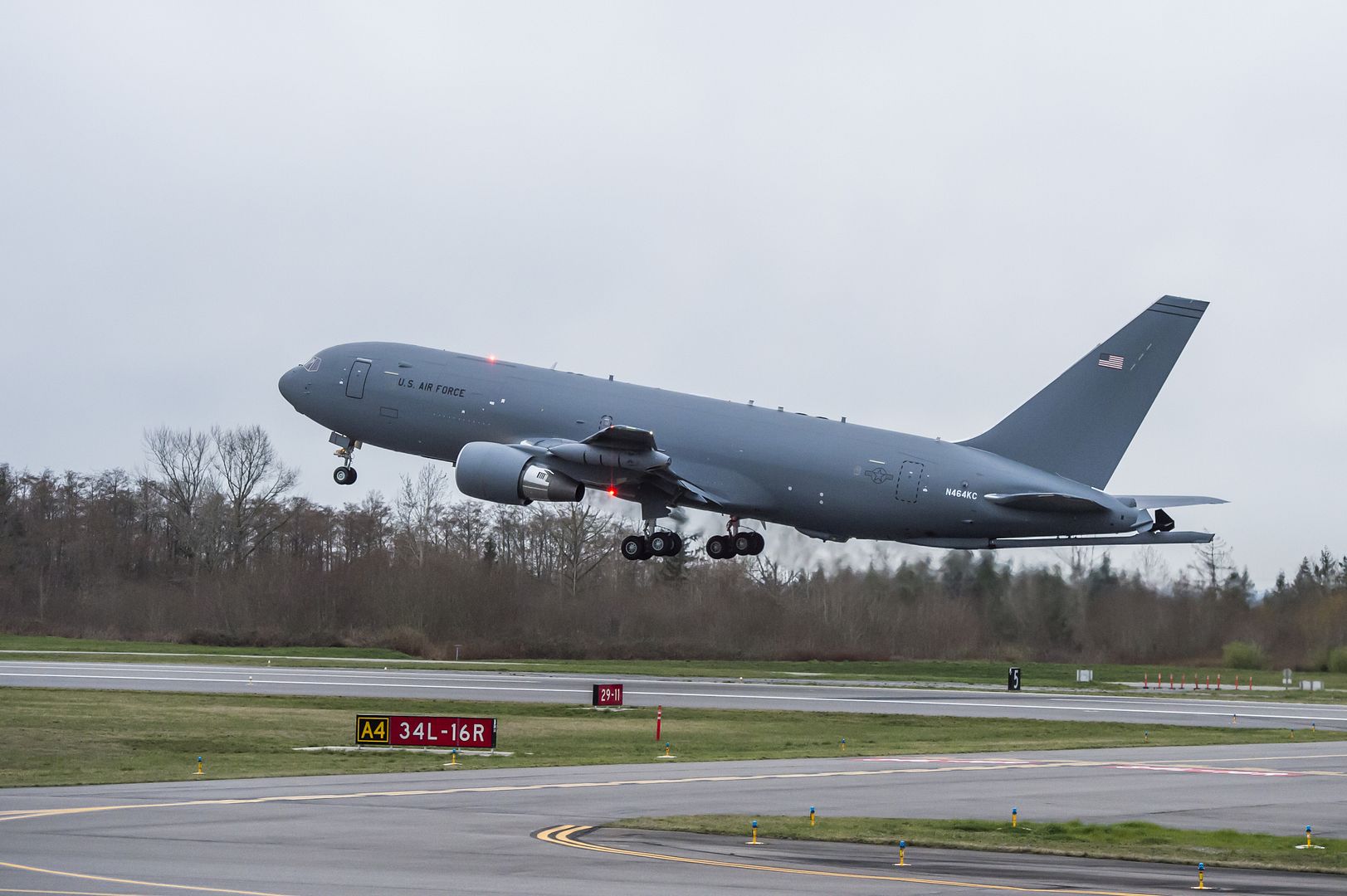
4 March 2016 Press Release
Painting of the first U.S.-built A321 has been completed as it emerged from the paintshop in Mobile, Alabama in its JetBlue livery. This latest milestone shows that the first aircraft to be produced at the Airbus U.S. Manufacturing Facility is progressing well on its route to first flight and delivery in spring 2016.
The aircraft painting was achieved by MAAS Aviation. The company is responsible for painting aircraft in its new facility located on the Mobile Aeroplex at Brookley within the Airbus manufacturing facility campus.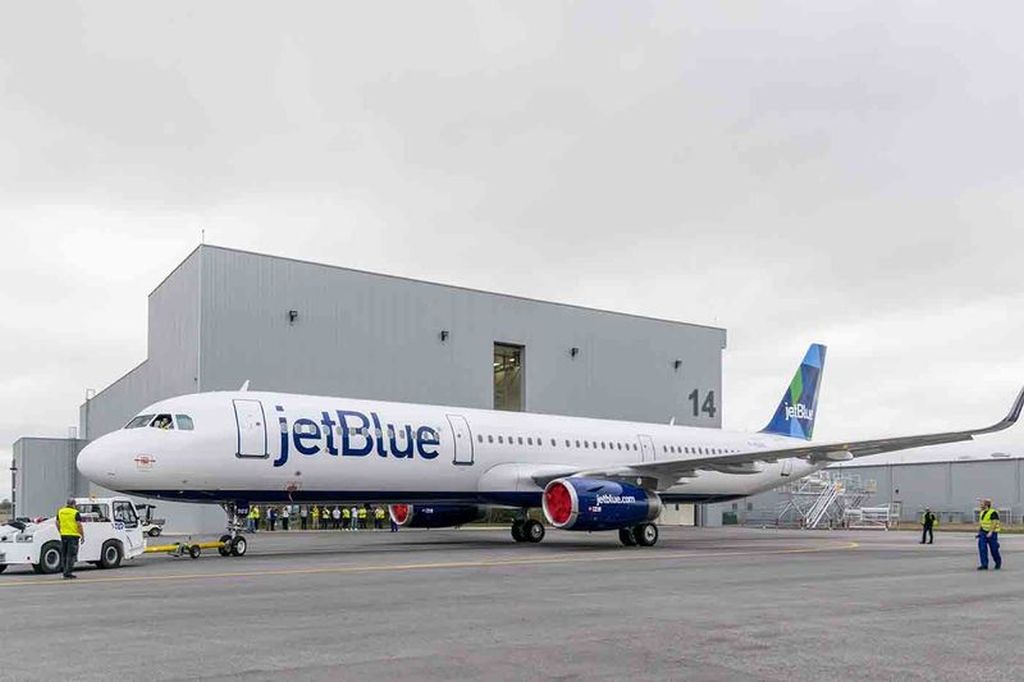
-
 Main Admin
Main Admin
Post a reply
- Go to Previous topic
- Go to Next topic
- Go to Welcome
- Go to Introduce Yourself
- Go to General Discussion
- Go to Screenshots, Images and Videos
- Go to Off topic
- Go to Works in Progress
- Go to Skinning Tips / Tutorials
- Go to Skin Requests
- Go to IJAAF Library
- Go to Luftwaffe Library
- Go to RAF Library
- Go to USAAF / USN Library
- Go to Misc Library
- Go to The Ops Room
- Go to Made in Germany
- Go to Campaigns and Missions
- Go to Works in Progress
- Go to Juri's Air-Raid Shelter
- Go to Campaigns and Missions
- Go to Works in Progress
- Go to Skinpacks
- Go to External Projects Discussion
- Go to Books & Resources
